Denzel's desire: MSU's Valentine determined to succed in the NBA
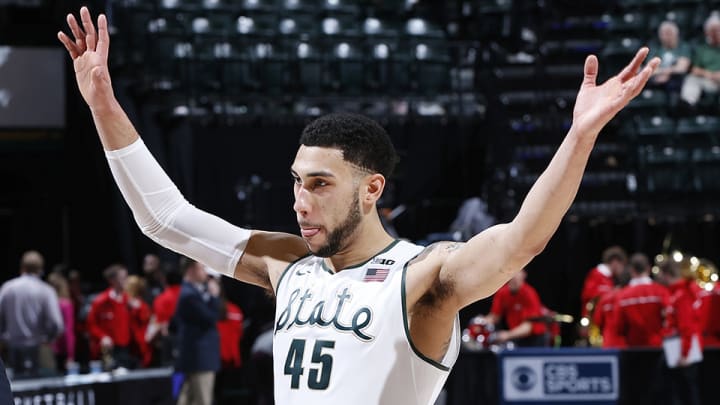
Your teams. Your favorite writers. Wherever you want them. Personalize SI with our new App. Install on iOS (iOS or Android)
Denzel Valentine looked relaxed as he smiled and leaned back in his chair in the lounge of the main office at Macy’s Merchandising Group in midtown Manhattan on Tuesday, where he awaited a photo and video session with Bar III, the clothing company providing his draft day suit. His attire—a blue blazer, white shirt and white tie with uneven black spots—is only a preview of what’s to come on draft night Thursday, he says.
“They hooked me up, it looks good,” Valentine said. “Excited to wear it.”
A year ago, his draft status was uncertain. Following a stellar senior season, the former Spartan is now expected to be picked in the 16–22 range, according to recent mocks, becoming Michigan State coach Tom Izzo’s 11th senior drafted by an NBA team in 20 years.
Last season Valentine averaged 19.2 points, 7.5 rebounds and 7.8 assists, numbers that haven't been achieved since the assist became an official stat category in 1983–84. He was named player of the year by a number of media organizations—USA Today, NBC Sports, Associated Press and Sports Illustrated, to name a few—and cemented his status as a proverbial “winner,” a title given to players who have displayed the ability to succeed on more than one level.
• NBA draft needs for all 30 teams | Notebook: draft sleepers, best guards
Valentine called on a player he's often been compared to, former Michigan State star and current Golden State Warriors star Draymond Green, on Tuesday morning to talk about the draft. Valentine avoided talking about Game 7 (“That’s kind of a gray area and you don’t want to cross that line,” he said with a laugh), but Green did have a piece of advice.
“He told me stay true to myself, keep being who I am, don’t change and just keep working hard and you’ll be successful,” Valentine said.
It may be a simple message, but that’s what has enabled Green, who was labeled a tweener, questionable defender and role-player-at-best entering the 2012 draft, to become an invaluable player. Green, who was drafted 35th overall, is the ultimate jack-of-all-trades for Golden State, a rare player who can lead a fast break, bang with the opposing center, and knock down key three-pointers within the same game.
Perhaps the biggest beneficiary of Green’s impact is Valentine, who shares many of Green’s strongest qualities. Valentine played alongside another ballhandler in Lourawls Nairn during the first two months of the season and spaced the court with his three-point shooting (44.4% on 7.5 attempts per game last season). When Nairn went down in January with a foot injury, Valentine took over ball-handling responsibilities for the rest of the season and maintained a 2.84-to-1 assist-to-turnover ratio, one of the highest in the nation among Power 5 players. He was also the seventh-best rebounder in the Big Ten, despite standing just 6’5”.
2016 NBA Draft Big Board
#1: Brandon Ingram, Duke — 6'9", 195 | Forward | Freshman
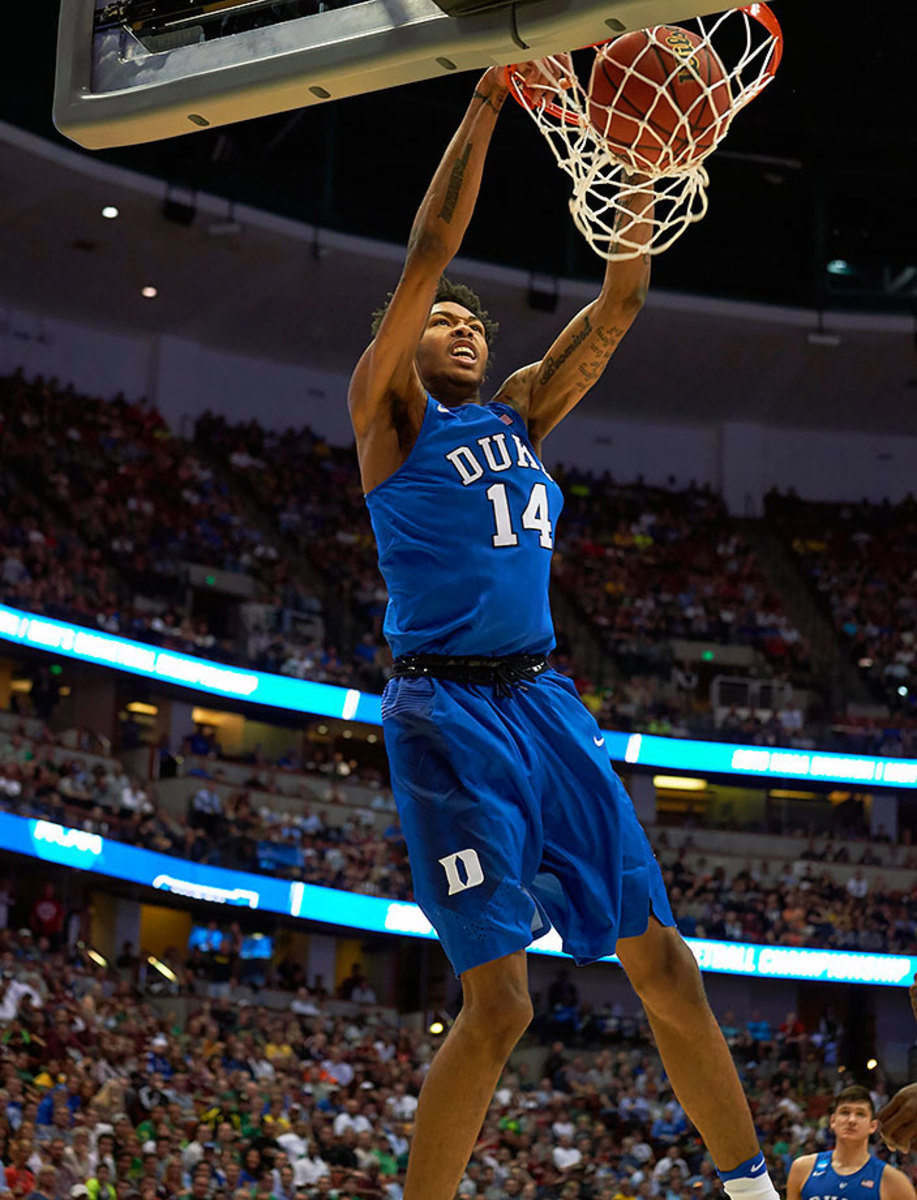
It sounds like the Sixers are almost-definitely going to draft Ben Simmons first. You can justify both players there, but I’m sticking with Ingram as the top overall prospect. He is not as physically prepared for the NBA, but Ingram’s combination of scoring instincts and shooting ability offer him a clear pathway to NBA success and lessen the risk involved in his development. In a draft where there are few “wow” prospects, Ingram offers the best combination of low risk and high reward.
#2: Ben Simmons, LSU — 6'10", 240 | Forward | Freshman
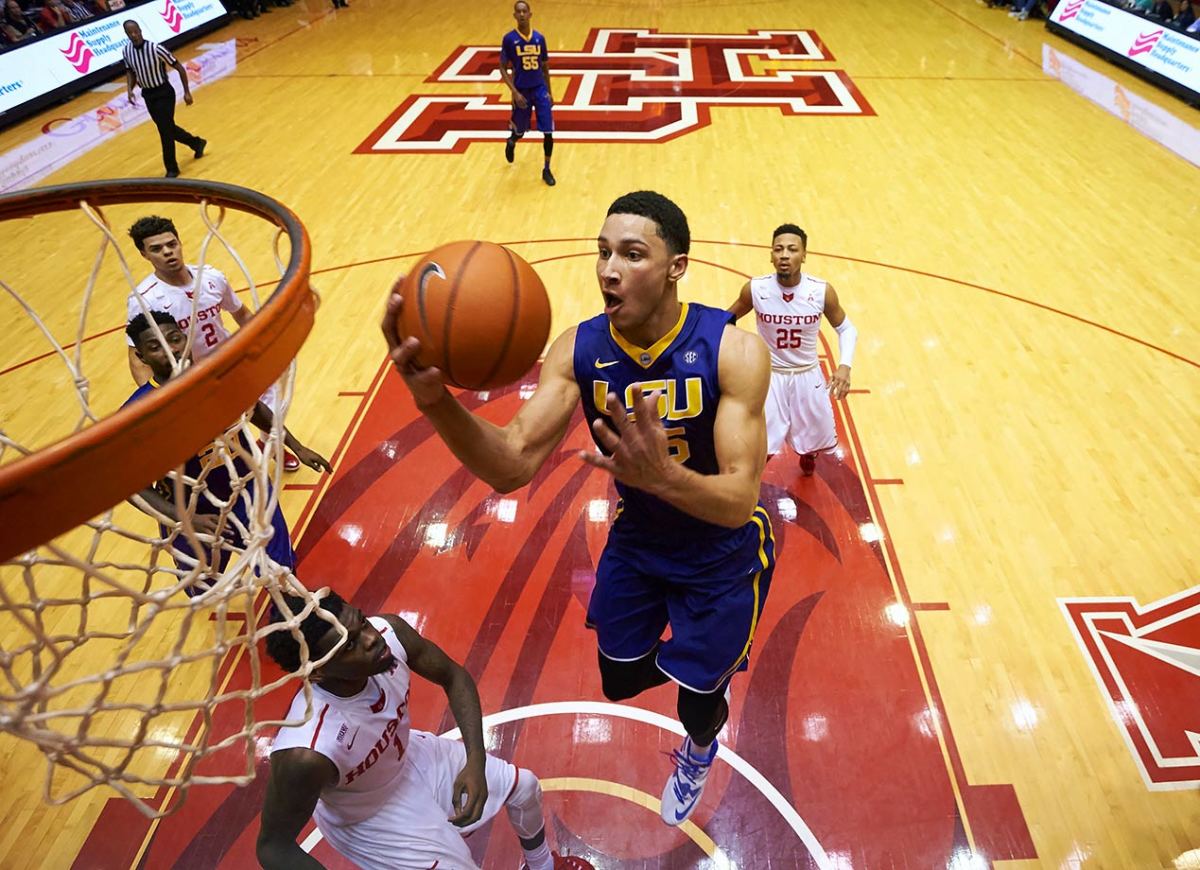
Simmons is one of the more unique talents to come along in decades, and all signs point to him being selected No. 1. He is not a scorer by trade, nor a highly instinctive or diversified one, but his innate passing ability at his size makes him special. Drafting him means committing to putting shooters around him and enabling him to do what he does best as a ballhandler. Building that roster also means investing time and assets, and enabling is a key word here for a kid whose approach to the game and handling of adversity has come into question. But if it all comes together right, he could be a spectacular player indeed.
#3: Dragen Bender, Maccabi Tel-Aviv — 7'0", 216 | Forward | 18 years old
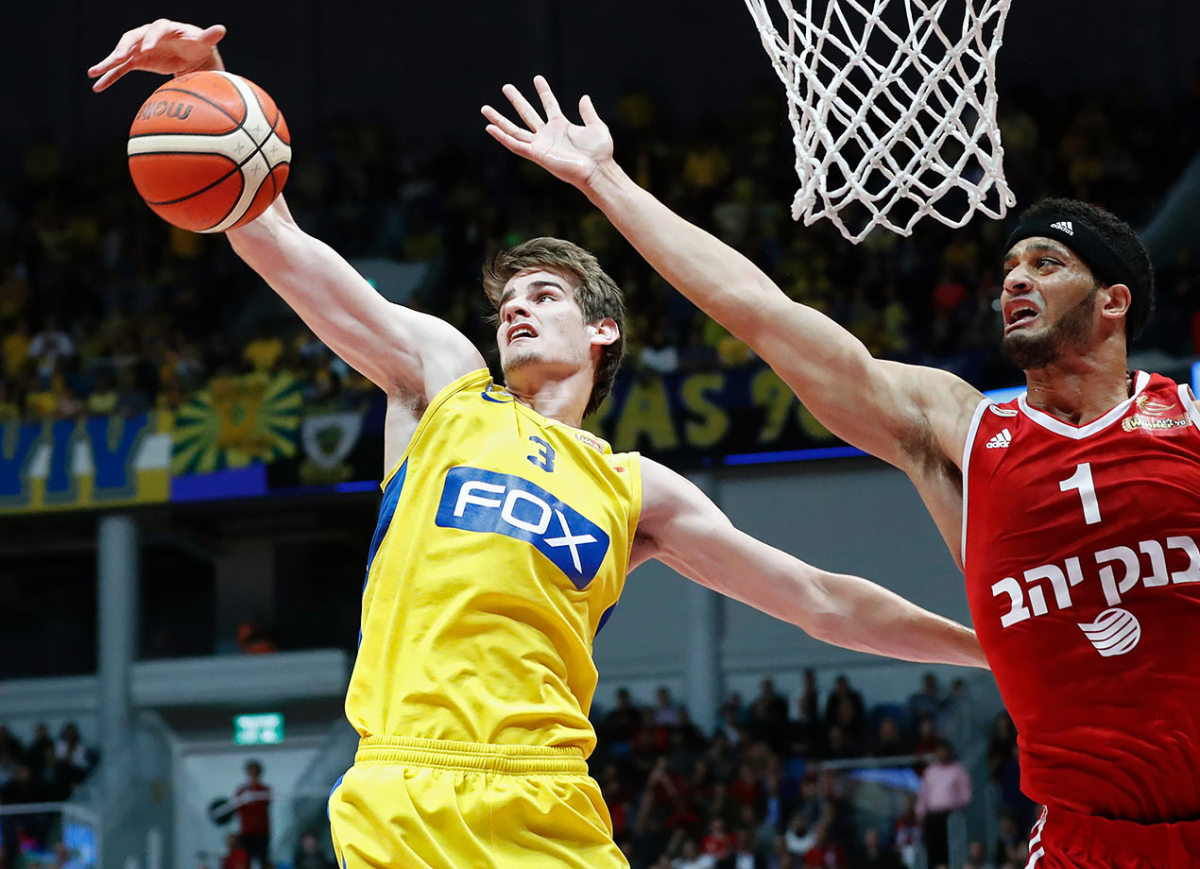
I loved the Toni Kukoc comparison that Luke Winn posed in SI’s recent feature on Bender. Bender’s not unlike Simmons in that sense as an oversized passer, although he doesn’t facilitate offense on the ball in the same fashion. With his playmaking, shooting potential and unselfishness at 7' 0", Bender has the talent to become a weird but fashionable offensive cog for a good team. As he grows into his body, his place on the floor defensively should become clearer. He’s the youngest player in the draft, too.
#4: Jamal Murray, Kentucky — 6,4", 205 | Guard | Freshman
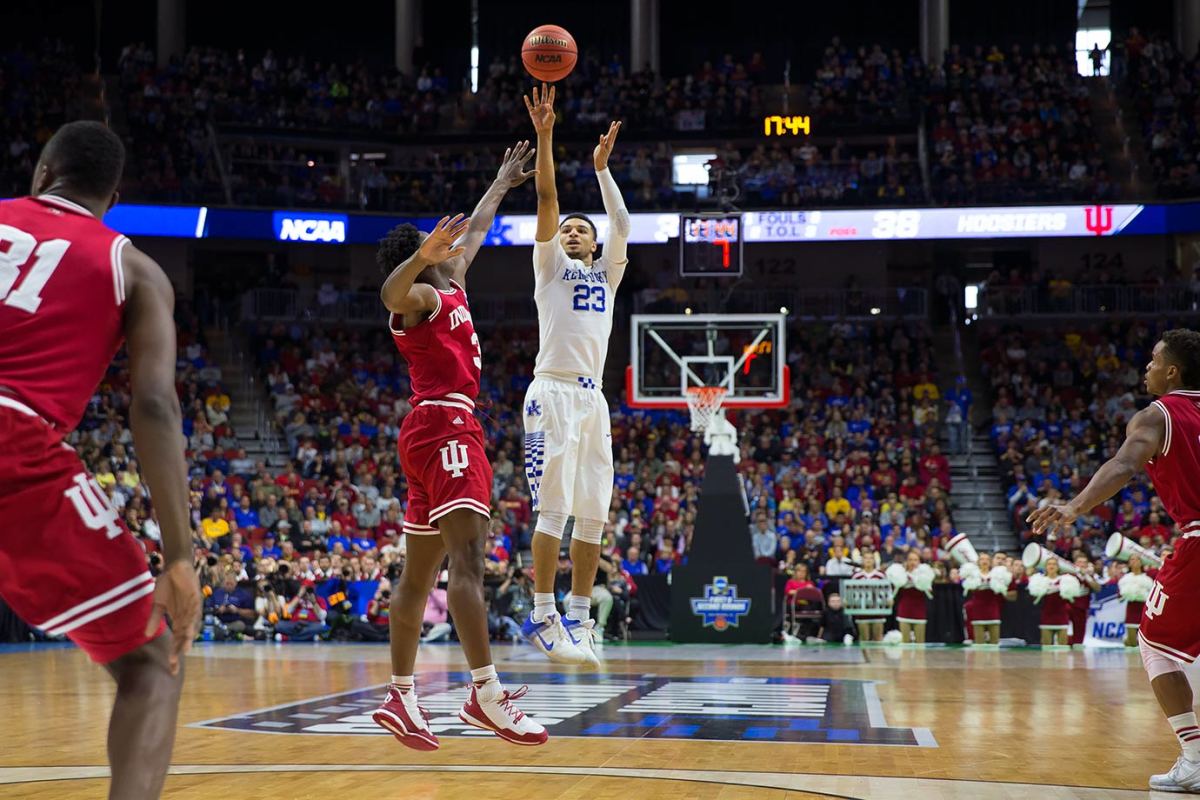
In a different draft class, Murray might go in the 10–15 range. He’s not the most athletic guard in the class, but he gets buckets and scouts love his confidence. His college production, shooting ability and the fact he won’t turn 20 until February give him plenty of value for teams seeking a long-term upside play. His craftiness and ability as a secondary playmaker should let him play a bit of both guard spots. He may slip a little on draft night given teams’ guard depth from picks 3–5, but not too much further.
#5: Kris Dunn, Providence — 6'4", 220 | Guard | Senior
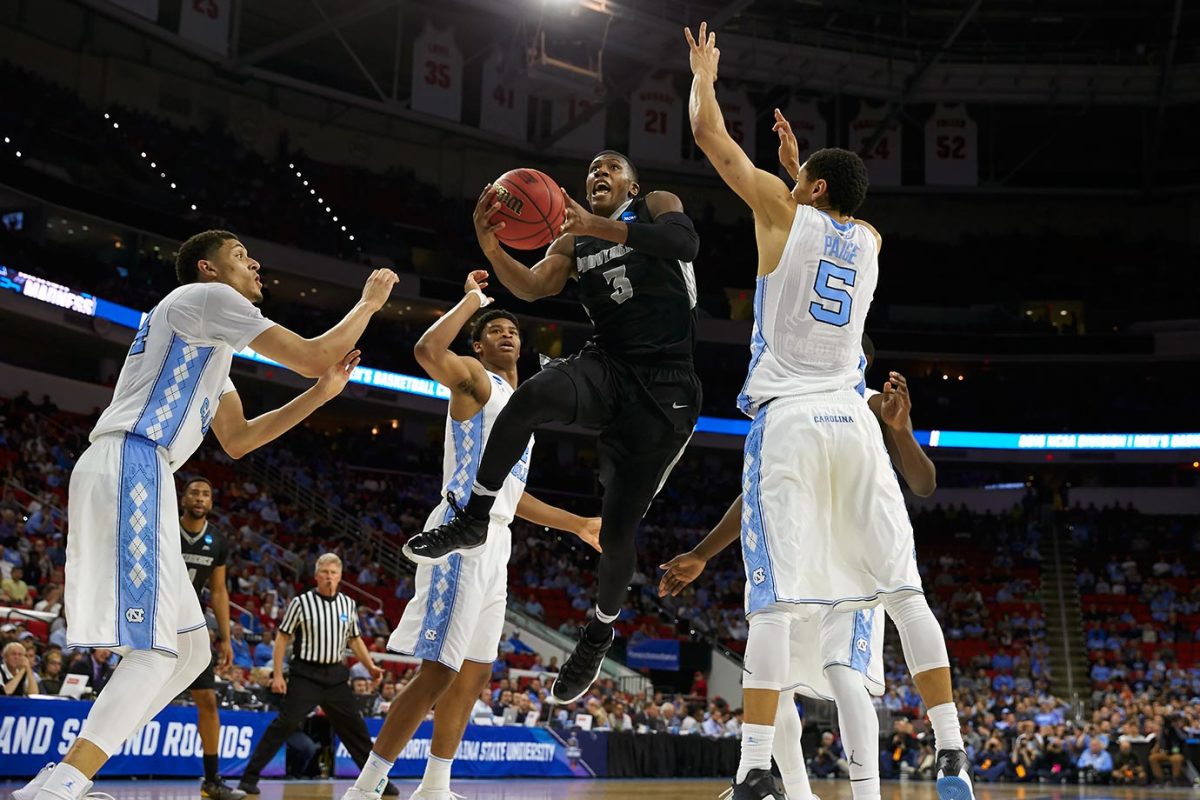
Rumors are heavily linking Dunn to the Timberwolves, and that makes a lot of sense, despite the presence of Ricky Rubio. He’s a Tom Thibodeau type. Dunn should be a plus defender who can run the offense and get to the rim. He’s a great athlete and is one of the most NBA-ready players in the draft. What exactly is Dunn’s ceiling will probably be tied to the development of his three-point shot. He’s the best point guard available, regardless.
#6: Henry Ellenson, Marquette — 6'10", 245 | Forward | Freshman
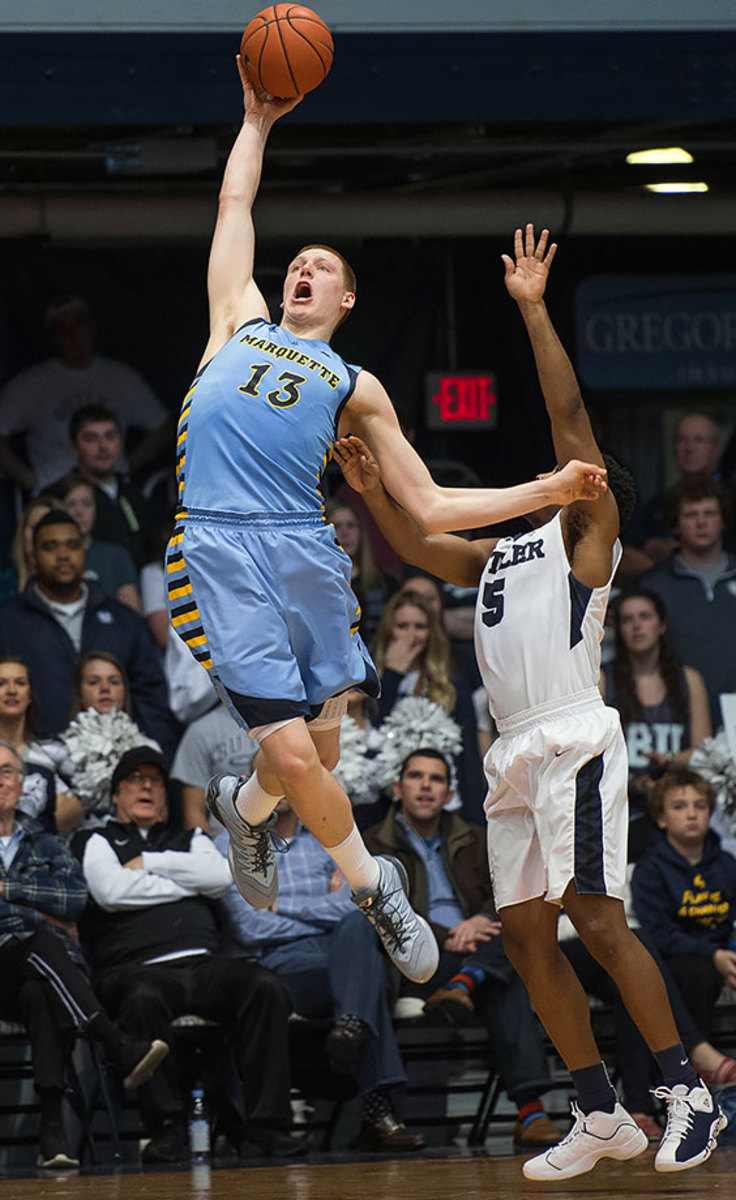
Ellenson has a very wide range of lottery outcomes, probably more than most in what’s already shaping up as an unpredictable first round. There’s no denying his talent offensively, distinguished by his mix of low-post scoring, jump shooting and ballhandling skills. The knock here is he’s not an explosive athlete nor a strong lateral defender, but if you’re playing him at center it could mitigate some of those concerns. True stretch five-men are hard to find.
#7: Buddy Hield, Oklahoma — 6'4", 215 | Guard | Senior
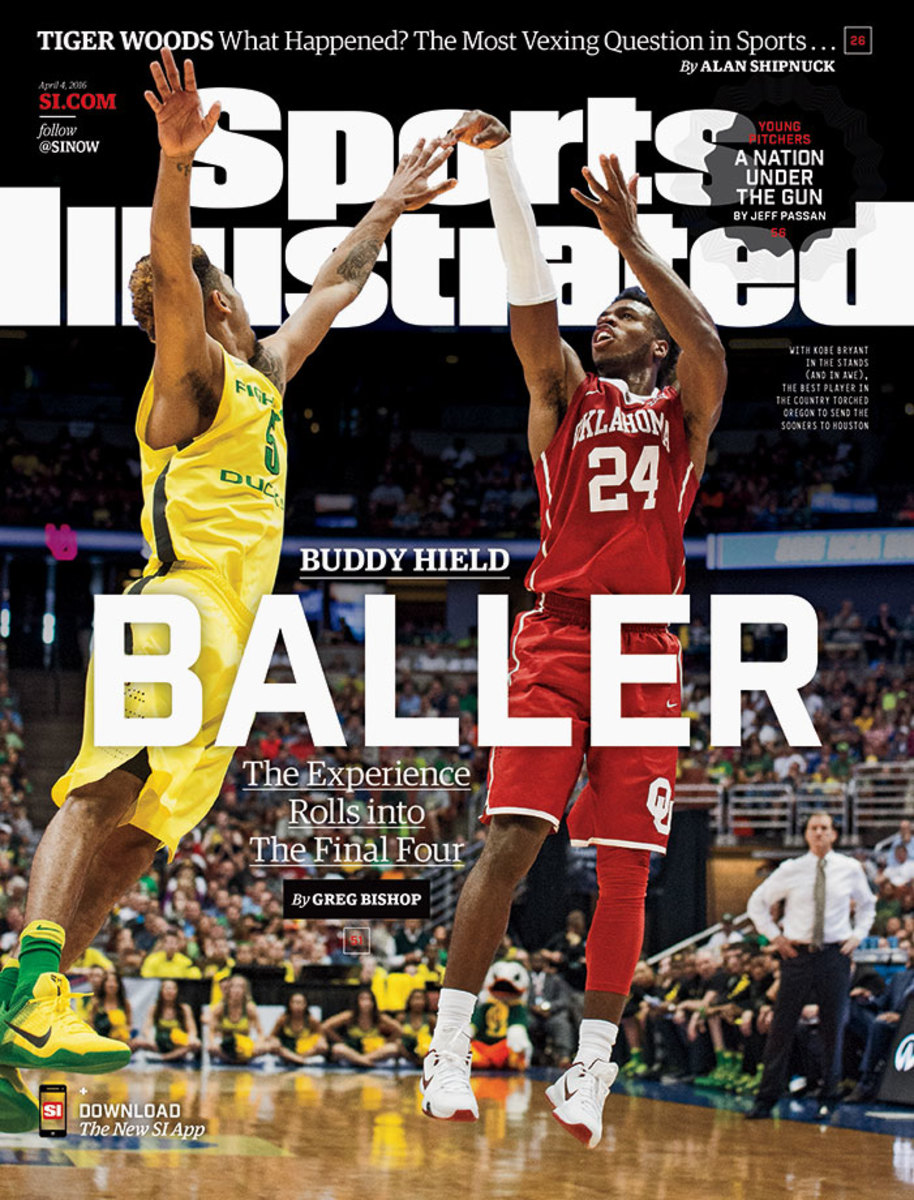
Hield apparently made 85 out of 100 threes in a recent Celtics workout and also told reporters he thinks he’s going to the Lakers. Neither of those two things matter much—we already knew he could shoot, and a leap into the top two would be stunning. Regardless, the elite three-point stroke and an otherwise regular skill-set gives the J.J. Redick comps credence. Though he’s 22 already, the development he showed over four college seasons actually plays in his favor with some scouts. Hield should be able to help you right away.
#8: Marquese Chriss, Washington — 6'10", 233 | Forward | Freshman
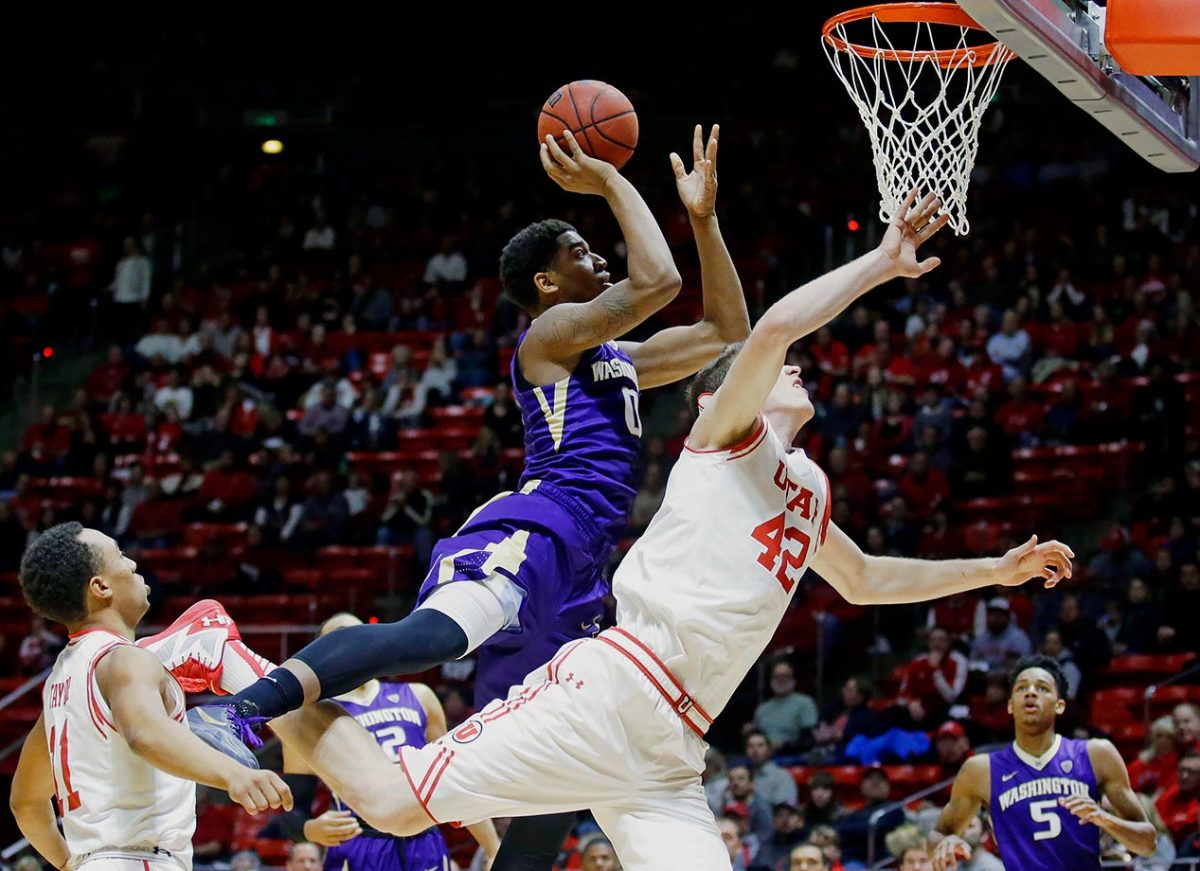
Some mocks have Chriss going in the top five based on his potential alone. That’s justifiable, but around here feels like more of his range. He’s got almost every tool you can ask for, but also hadn’t played much high-level basketball before coming on late at Washington. He almost definitely doesn’t know how good he can be. We’ve seen guys with similar profiles and better pedigrees float in and out of the league. As a stretchy, bouncy, scoring four-man, Chriss will be a sexy pick, but he’ll have a greater learning curve than most.
#9: Jakob Poeltl, Utah — 7,1", 240 | Forward/Center | Sophomore
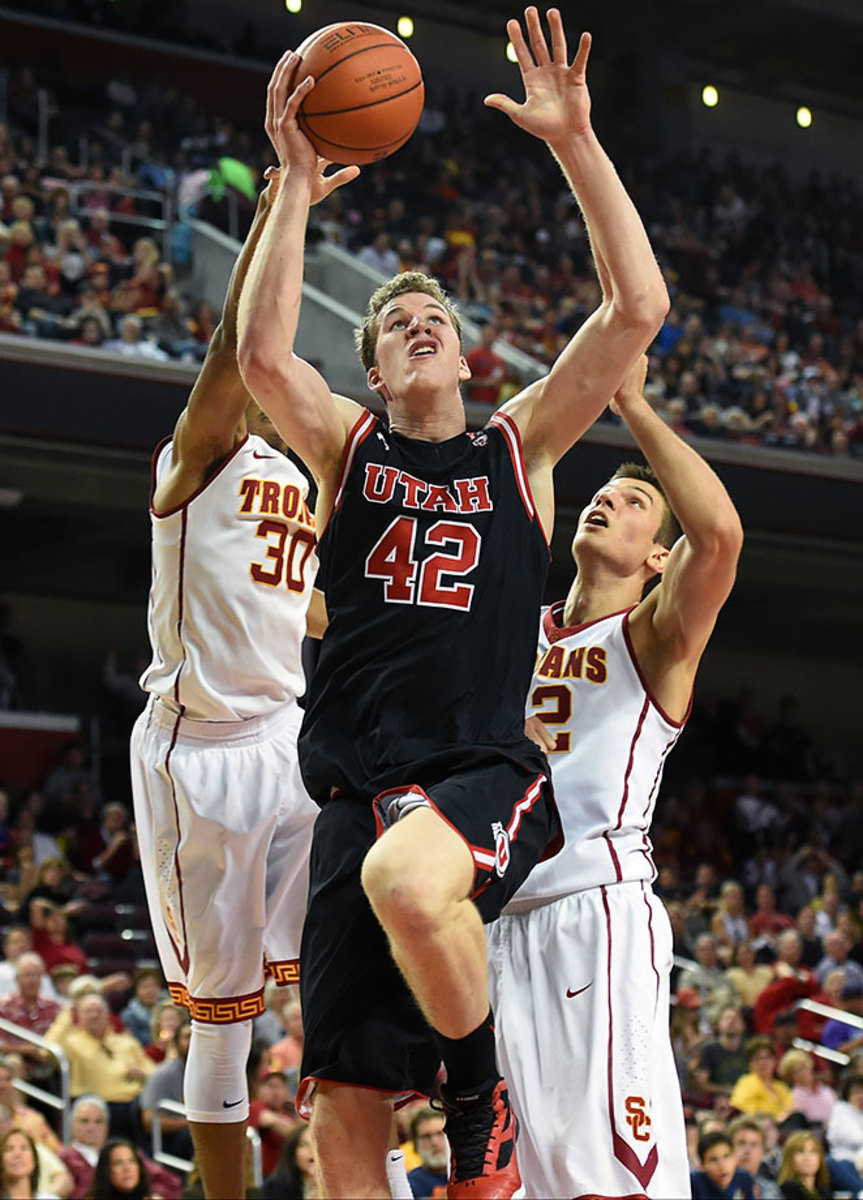
Poeltl’s a throwback big, and it’s almost working against him in the court of public opinion. Also working against him is the fact that not many teams in the top 10 really need a center. But look, he’s massive and has a well-developed post game, and there will be a place for those types of guys even as the league begins to skew small. He got noticeably better from freshman to sophomore year of college. Big men always take time. He’s a fairly safe pick in my book.
#10: Jaylen Brown, Cal — 6'7", 223 | Forward | Freshman
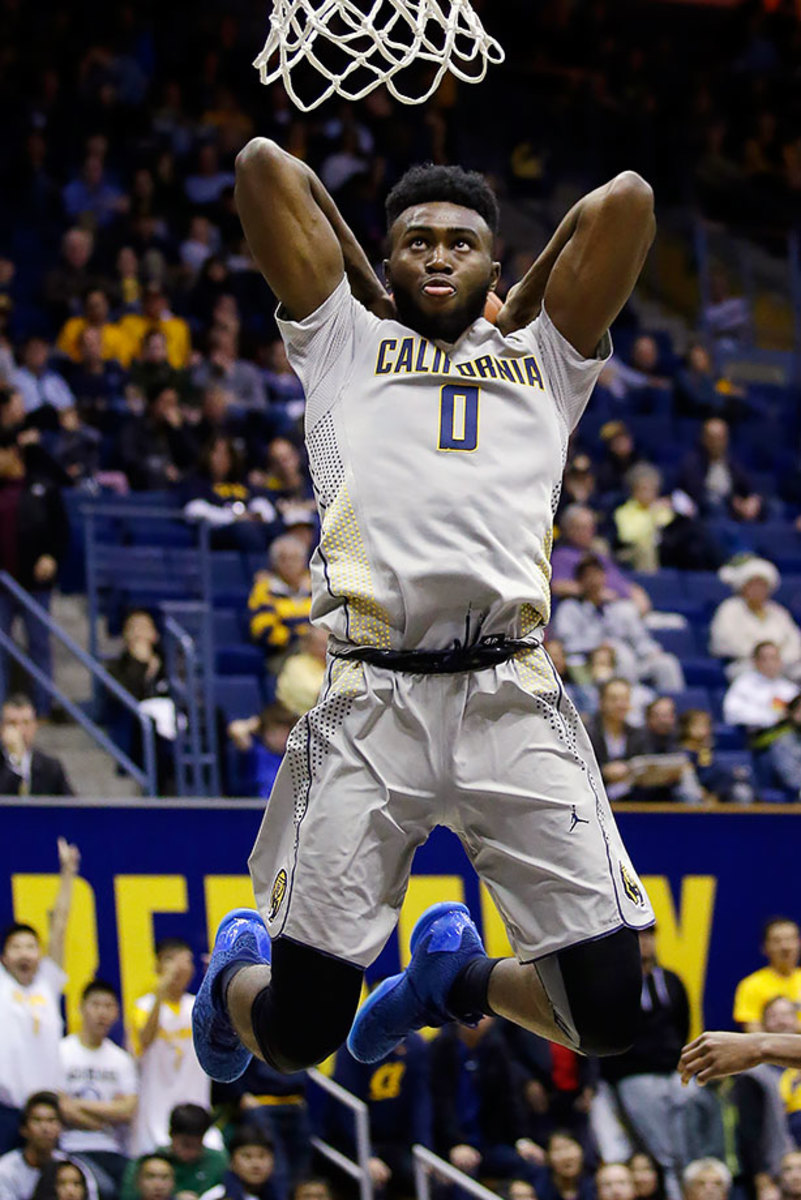
Something here just doesn’t quite move the needle like it should. Brown has every athletic tool in the book, but had a well-publicized rough go at Cal and probably lacks the basketball acumen to contribute early on. Big potential means he could conceivably go in the top five, but the opportunity cost could be high. He’s a smart kid, but can also overthink the game. One scout put it like this: “At least Gerald Green came in with a wet jump shot.”
#11: Timothe Luwawu, Serbia — 6'7", 205 | Guard/Forward | 20 years old
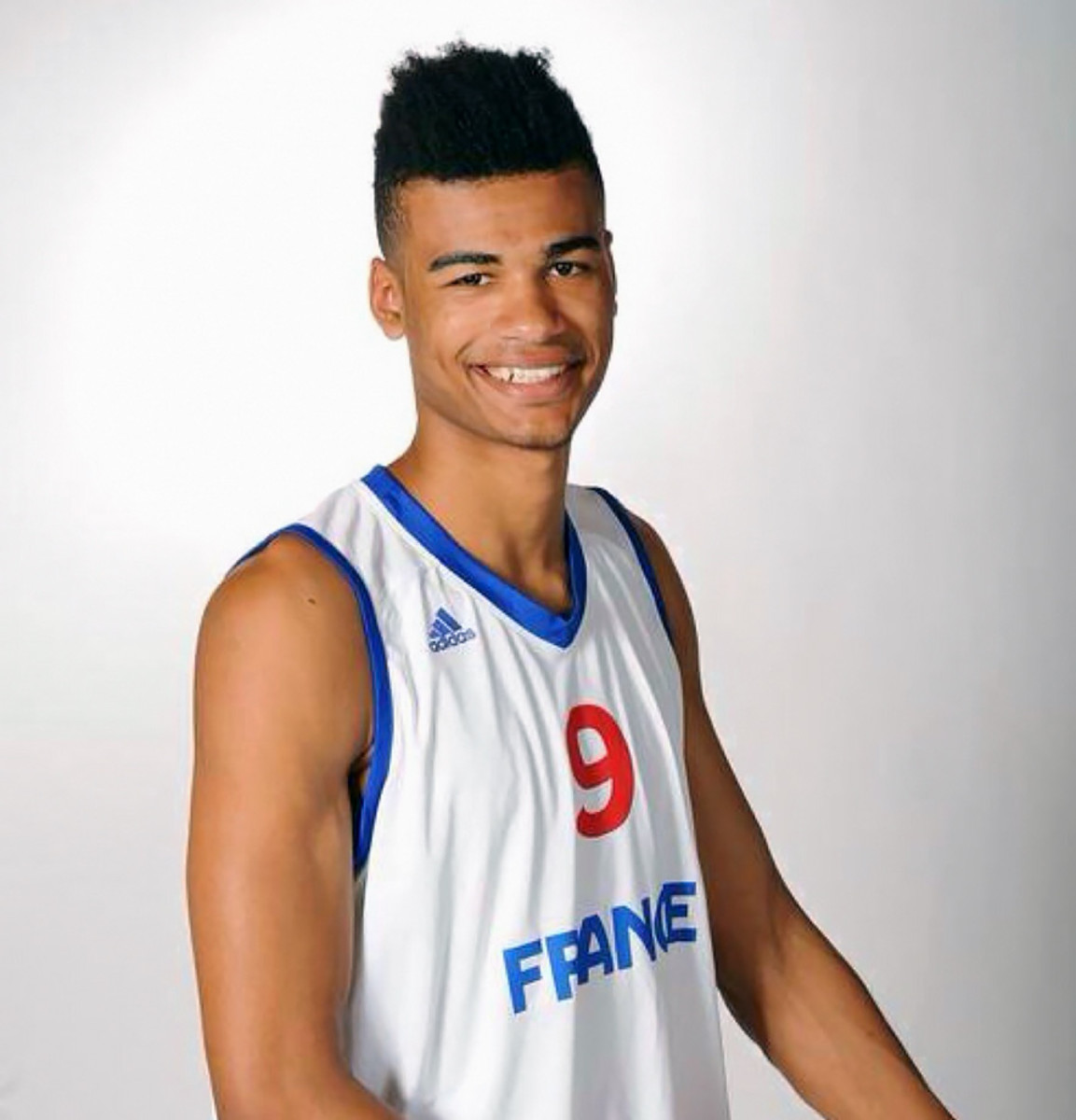
Two-way wings are always a valuable commodity, and Luwawu’s one of the best ones in a thin class. He’s a highlight-caliber athlete with a wingspan over 7’0” feet and shouldn’t slip too far from here. Scouts I spoke with felt he was closer to NBA-ready than most. Luwawu’s got a more diverse offensive game than just his dunk reel, and has made big strides in the past year. There’s a lot to like with him.
#12: Deyonta Davis, Michigan State — 6'10", 240 | Forward | Freshman
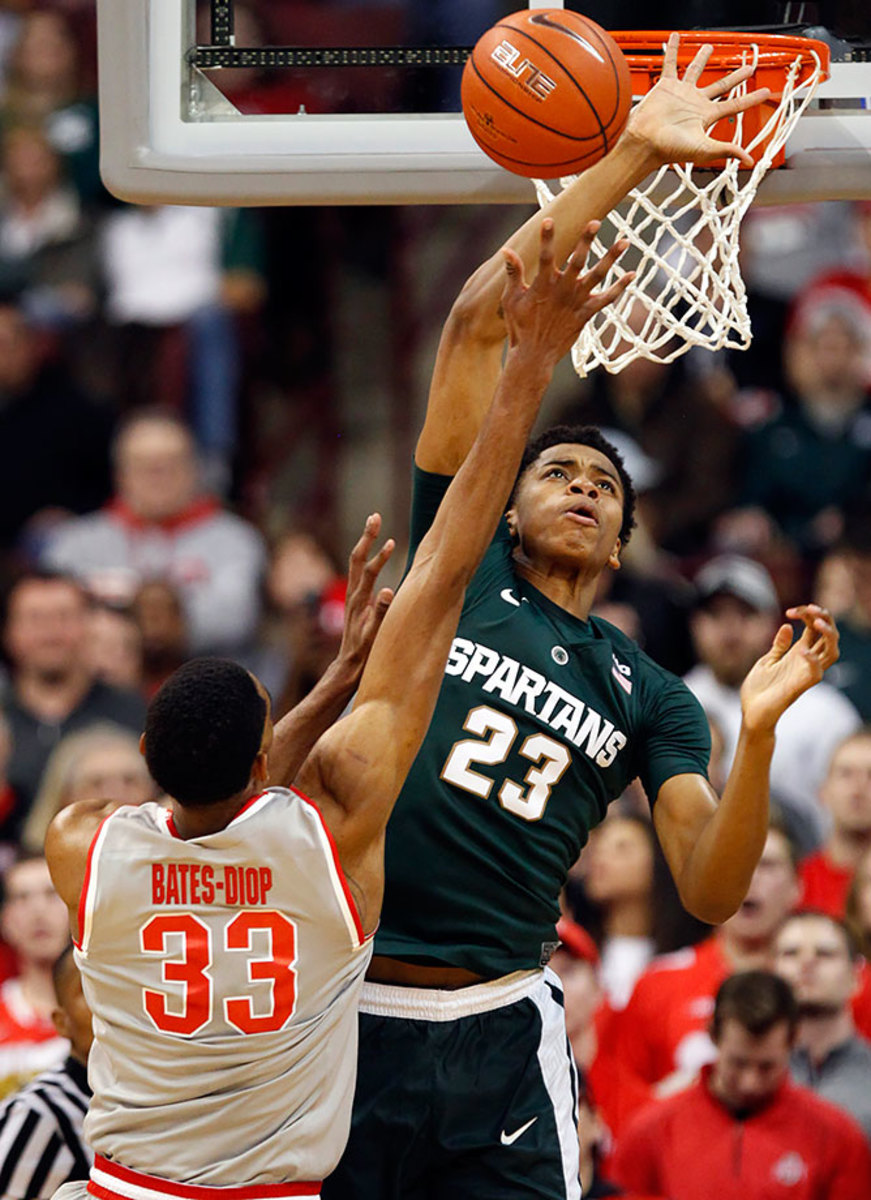
Everything is about projection with Davis. His length, quick feet and great shot-blocking instincts portend defensive success. With improving touch and a semblance of a jump shot, you can mold him on offense, too. He played a good bit for Tom Izzo, which matters, but there’s not much of a sample size or history of production to bank on. He’s a long way away from ready, but then again, there are a lot of guys in that same boat this year.
#13: Domantas Sabonis, Gonzaga — 6'10", 240 | Forward | Sophomore
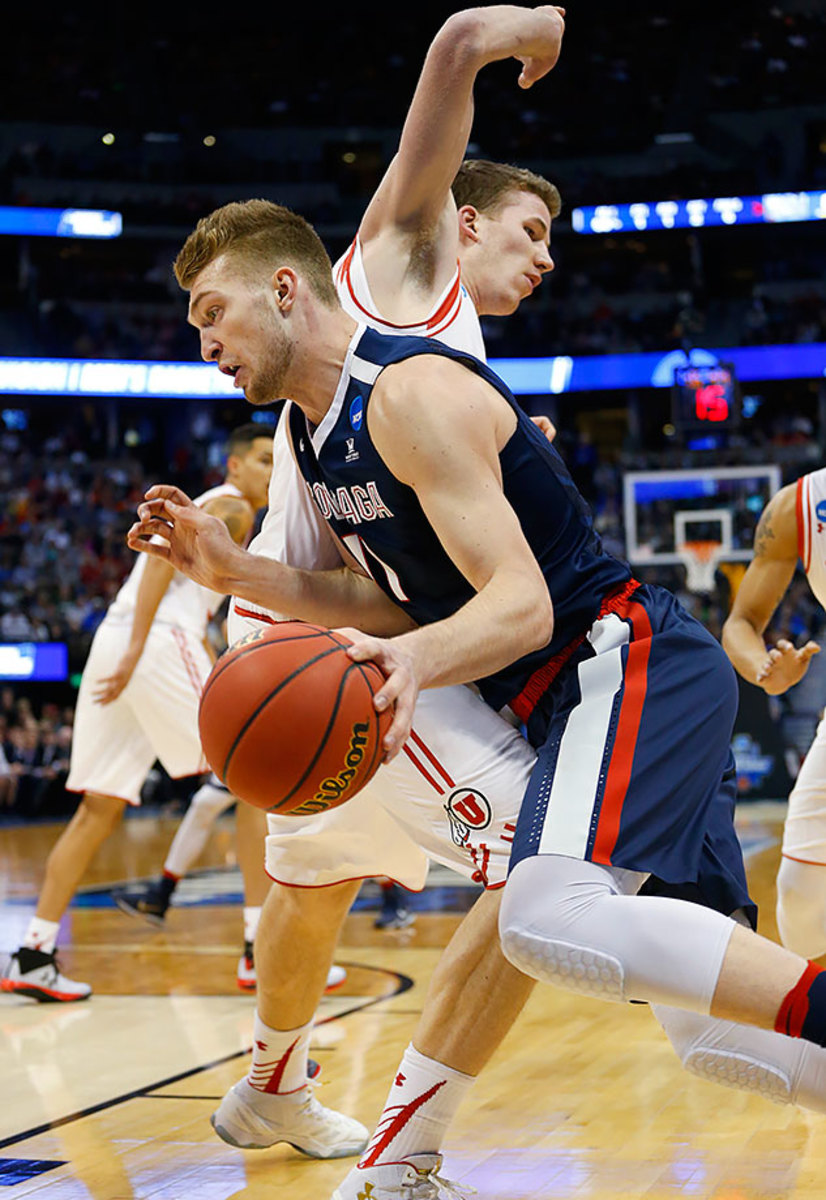
Sabonis plays exactly how you’d think the son of a Hall of Fame European big man would. Great fundamentals, soft hands, high motor and IQ. His Gonzaga production backs things up well. The issue is his lack of explosion and length, which raises questions about exactly what translates at the next level. Mid-first round and onward, Sabonis offers some safe value. There’s speculation he has a promise from a team in the late lottery.
#14: Furkan Korkmaz, Anadolu Edes — 6'7", 175 | Guard | 18 years old
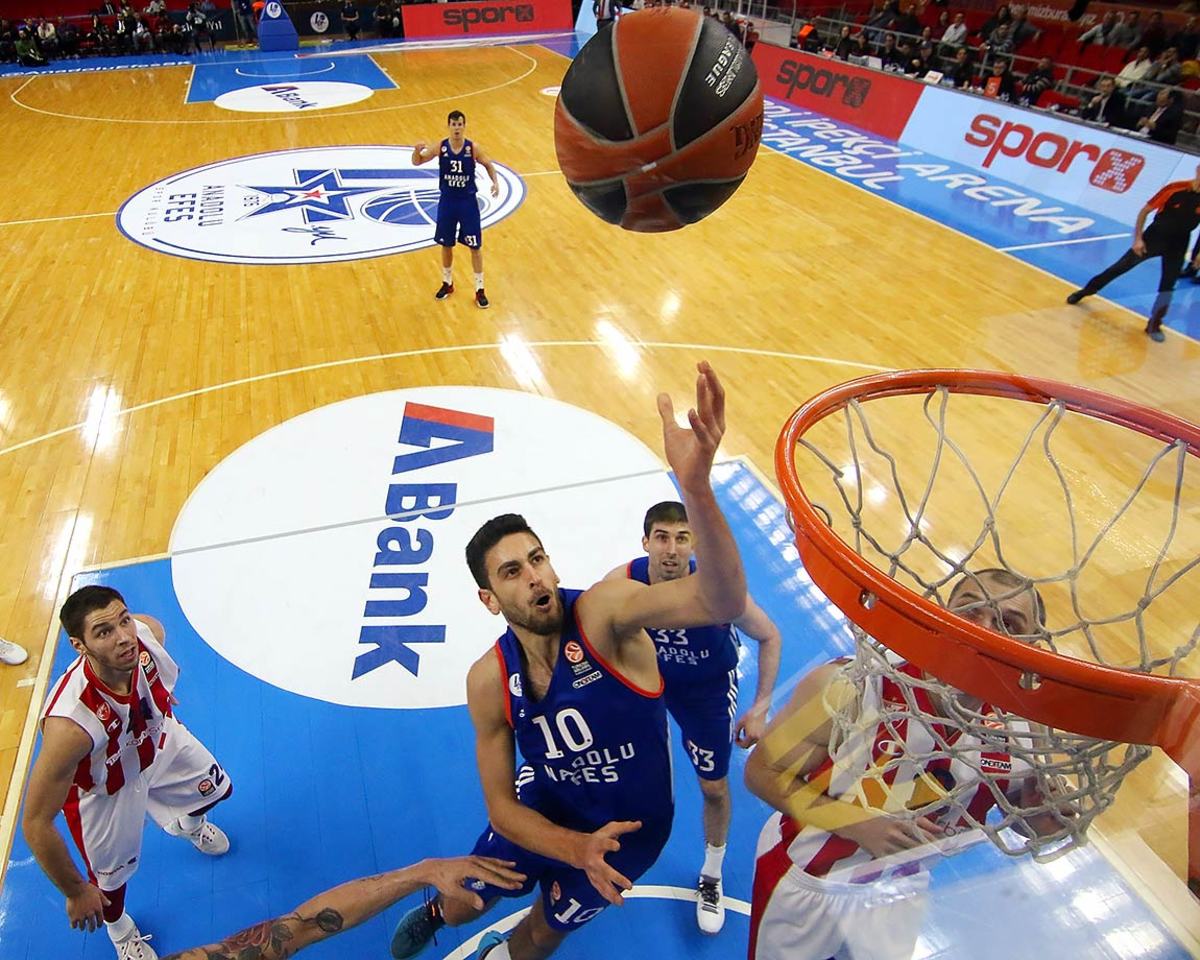
The combination of athleticism, shooting and youth make Korkmaz a very interesting stash candidate. He’s starred for Turkey at youth levels and shown flashes while playing with Efes’s senior team, but it’s worth noting how relatively small his sample size is against elite competition. He’s a long-term investment, not an immediate-impact selection.
#15: Skal Labissiere, Kentucky — 6'11", 216 | Center | Freshman
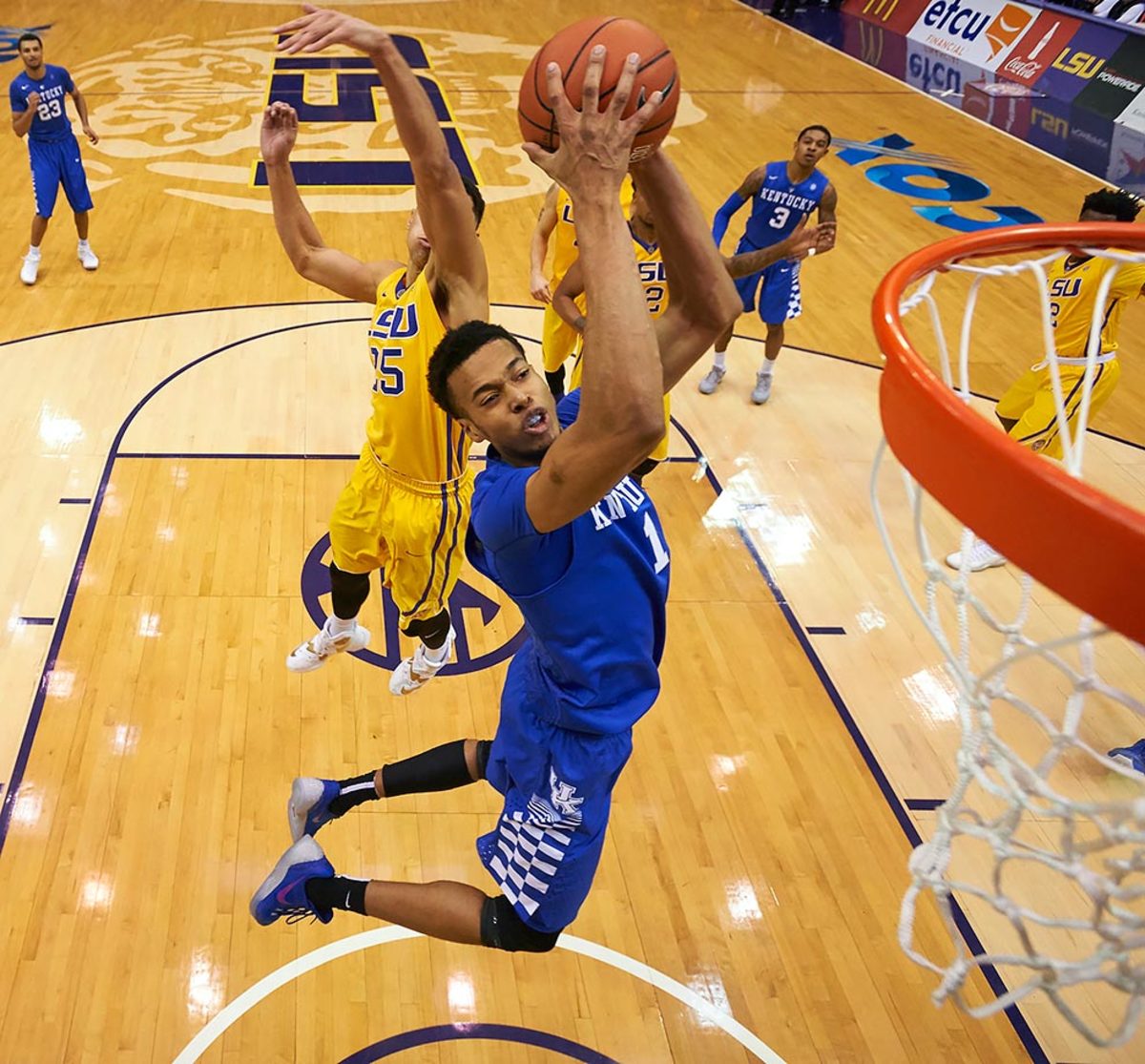
I have a hunch Labissiere slides toward the late teens on draft night. There’s just too much riding on projection with an older prospect who’s behind developmentally and with little history of consistent production. He’s big and might be able to shoot it and block shots, but he’s already 20 and has filling out left to do. Labissiere missed his junior season of high school with a back injury that has left lingering questions for teams. He could be a worthwhile gamble for teams with the time and resources to develop him. But, as one scout put it: “It’s really hard to play in the NBA not knowing how to play basketball.”
#16: Denzel Valentine, Michigan State — 6'6", 210 | Guard | Senior
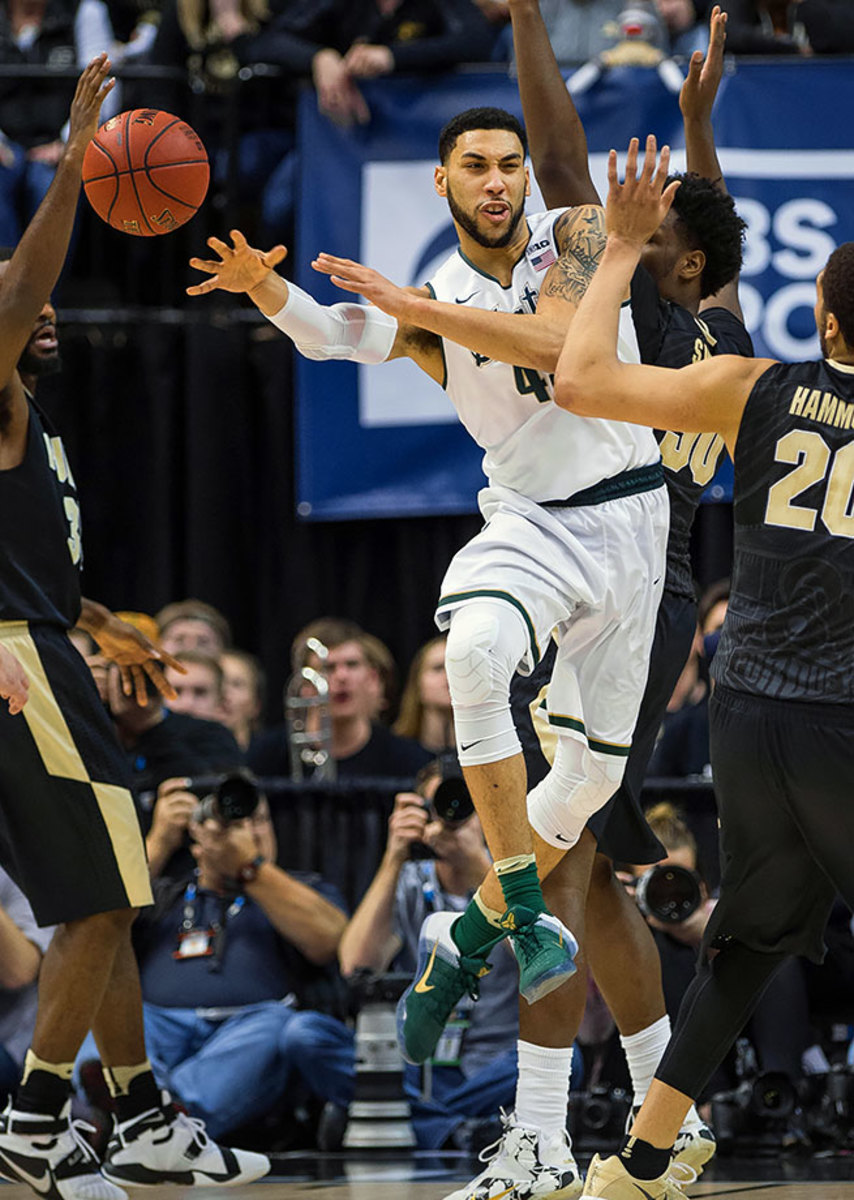
Valentine’s production (19.2 points, 7.5 rebounds, 7.8 assists) was outstanding last season, and his feel and playmaking help balance the lack of eye-popping athletic measurables. He won’t play the same ball-dominant role as a pro, but you’re buying him as a secondary ballhandler who can space the floor and hoping he catches up defensively. Teams have concerns about the condition of his right knee, which could cause him to slip a bit on draft night.
#17: Demetrius Jackson, Notre Dame — 6'1", 220 | Guard | Junior
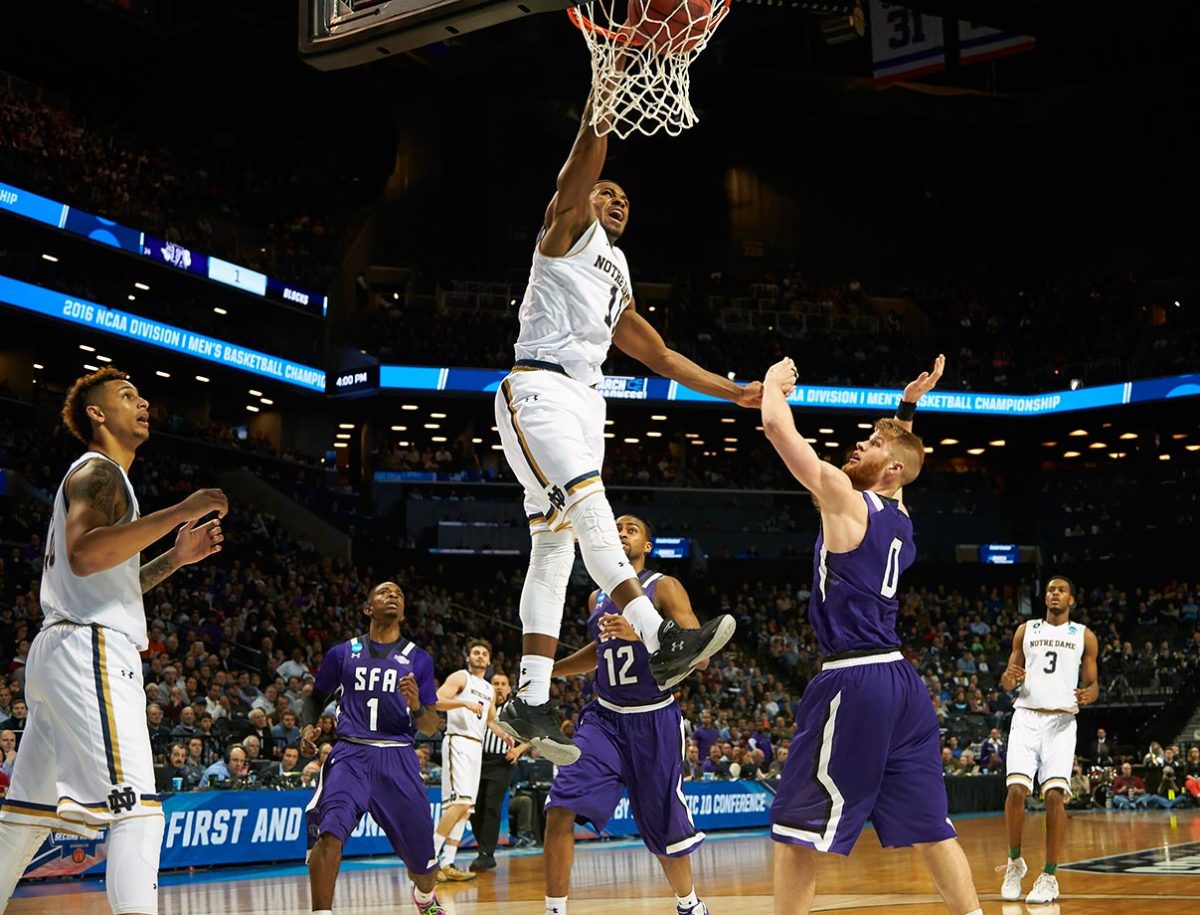
Jackson is tough and extremely athletic and has a good chance to be the second point guard drafted. He’s coming off a strong year at Notre Dame, but his shooting percentages dipped as he shouldered more of the scoring load. Skill-wise, he’s somewhat a master of none. His actual production will have to catch up to his tools. Scouts wonder if he’s cut out to be more than a reserve long-term, but he has decent value in this range.
#18: Wade Baldwin IV, Vanderbilt — 6'3", 195 | Guard | Sophomore
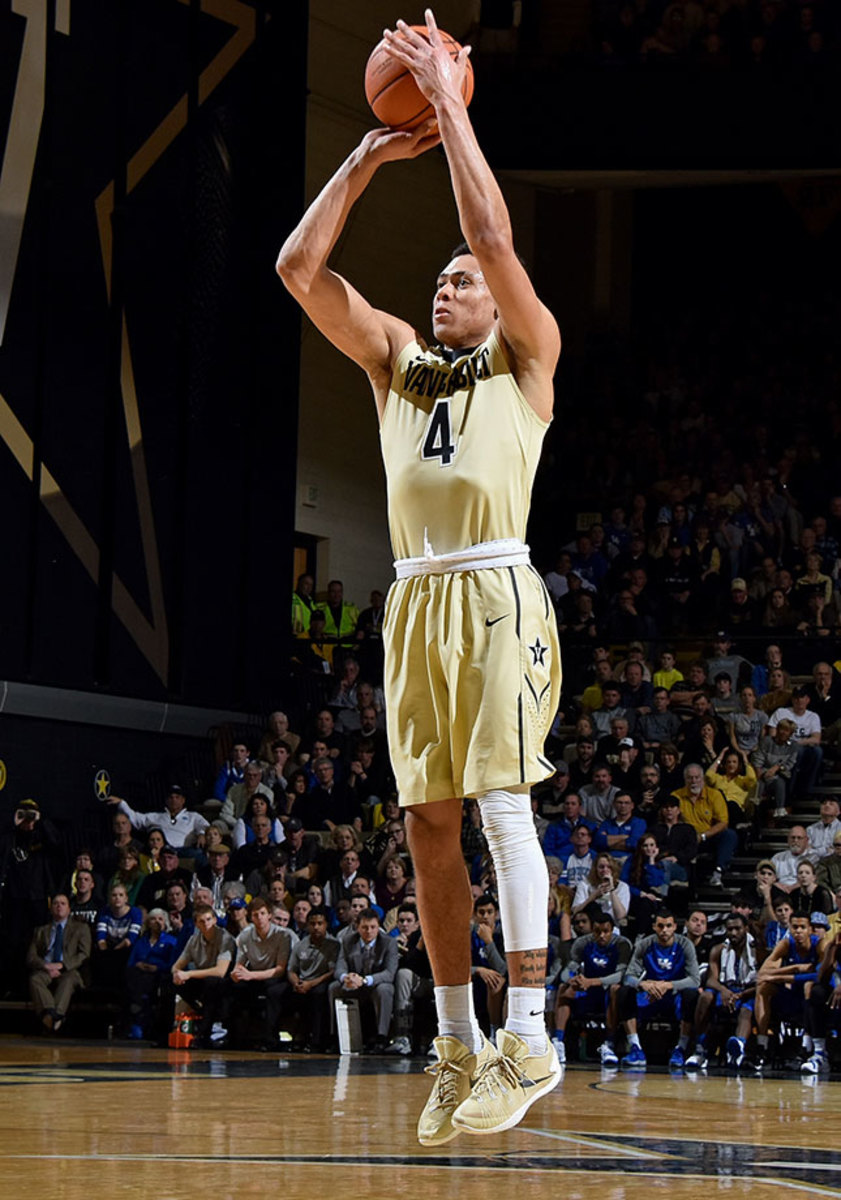
Baldwin’s combine measurements—6' 4" with a 6' 11" wingspan—certainly validated his case as a defensive stopper with a chance to be more. His offense hasn’t sold some scouts, and he’s not a natural point guard in the purest sense, but he can hit a shot and could perhaps be better suited for a lower-usage role. Multiple scouts have cited his tendency to overthink and get in his own way. Still, his defensive potential gives him a relatively high floor.
#19: Ante Zizic, Cibona Zagreb — 6'11", 240 | Center | 22 years old
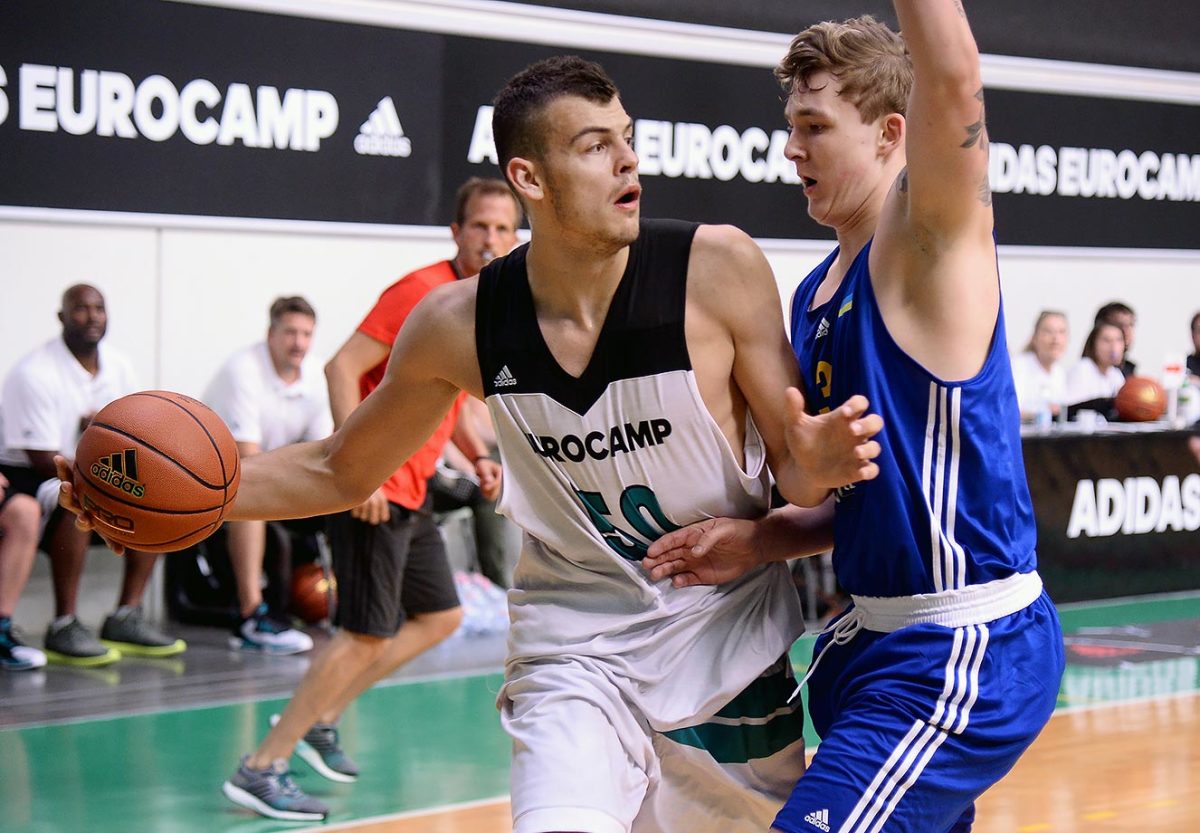
Near the top of the list among stash candidates is Zizic, a garbage-man type who knows his role, works hard on the glass and is physically mature enough to accomodate his preferred style. Impressive production as a teenager in the Adriatic League (13 points, eight rebounds per game) definitely stands out. Zizic’s skills have a ways to go, but it’s easy to see him as a nice complementary piece on the inside.
#20: Dejounte Murray, Washington — 6'5", 170 | Guard | Freshman
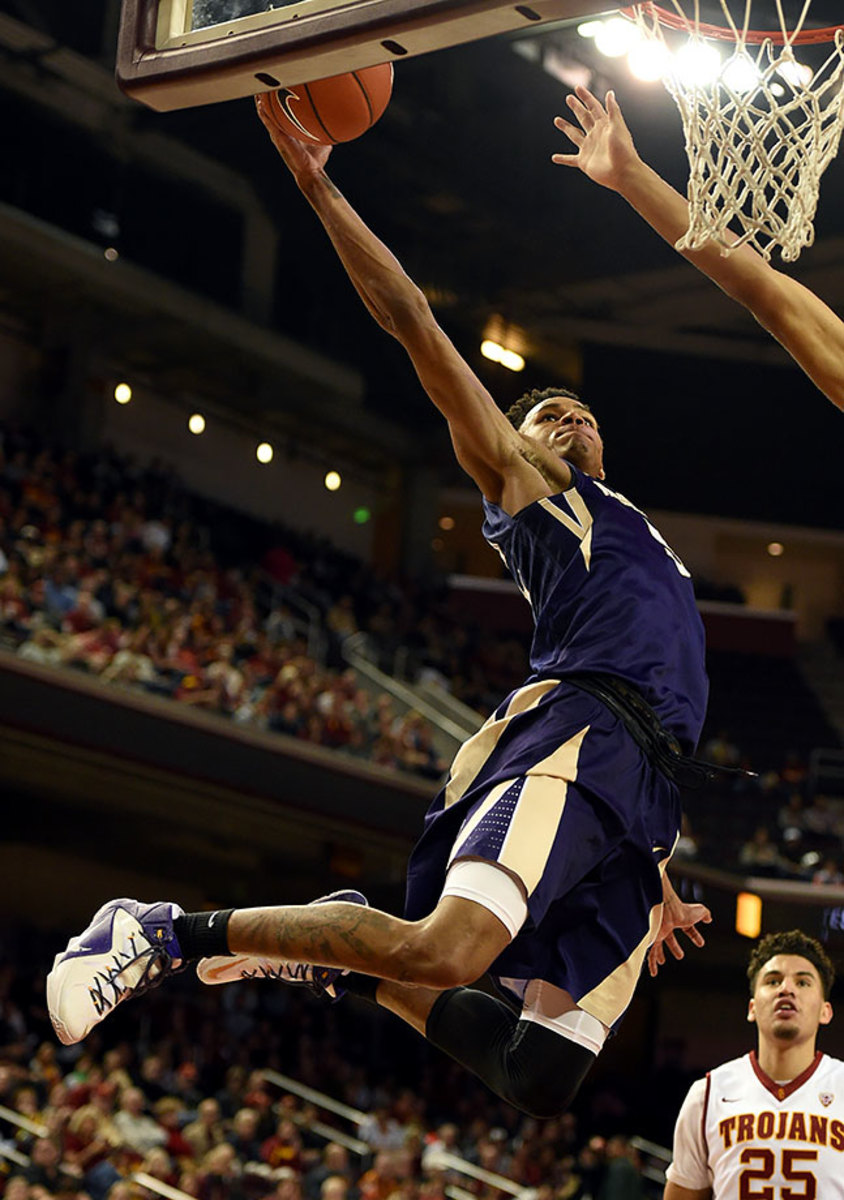
One optimistic scout calls Murray, simply, “a baller.” “He does some things you can’t teach,” another says. This is the crux of his intrigue, and while he’s going to need some time, he’s a definite upside play as a scoring combo guard. His shot is a work in progress. On talent and projection you can justify him in the late lottery, but his range appears pretty wide.
#21: Taurean Prince, Baylor — 6'7", 220 | Forward | Senior
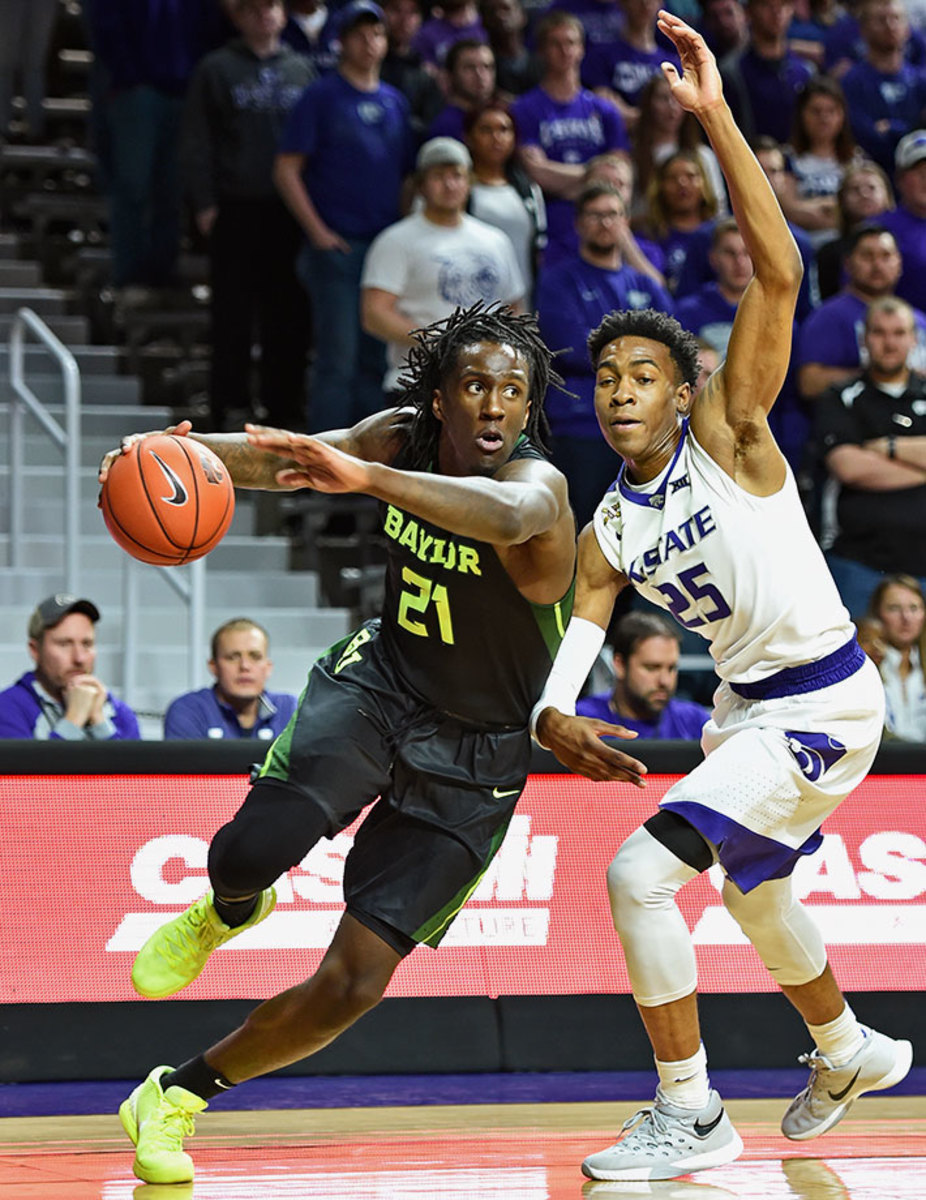
Prince did a little bit of everything for Baylor, with a game one scout described as “unconventional.” He’s long and strong and should be able to cut it athletically, and while he struggled some as a senior when tasked with making plays on the ball, odds are he won’t be asked to do as much of that in the NBA. Although he lacks an elite skill to hang his hat on, he should be able to step into a rotation pretty quickly.
#22: Tyler Ulis, Kentucky — 5'9", 160 | Guard | Sophomore
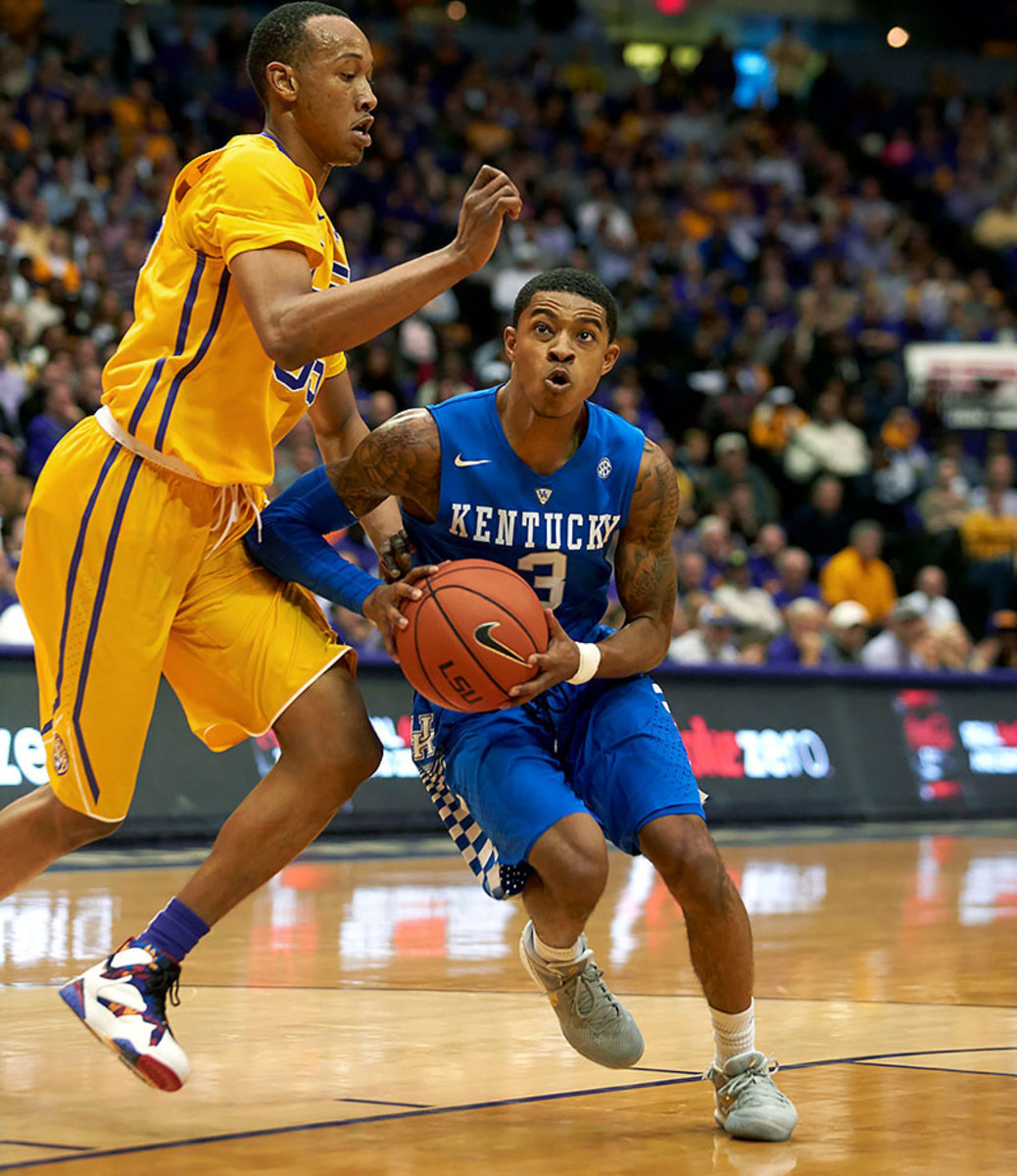
Ulis has solidified himself as a mid- to late-first rounder, and he’s probably the most instinctive passer among available guards. He won’t make many mistakes, and he’ll make everyone around him better. “Three inches taller,” one scout says, “and he would be the best point guard in this draft.” Medical concerns about his hip and his extremely thin frame gives some reason for pause.
#23: Cheick Diallo, Kansas — 6'9", 220 | Forward | Freshman
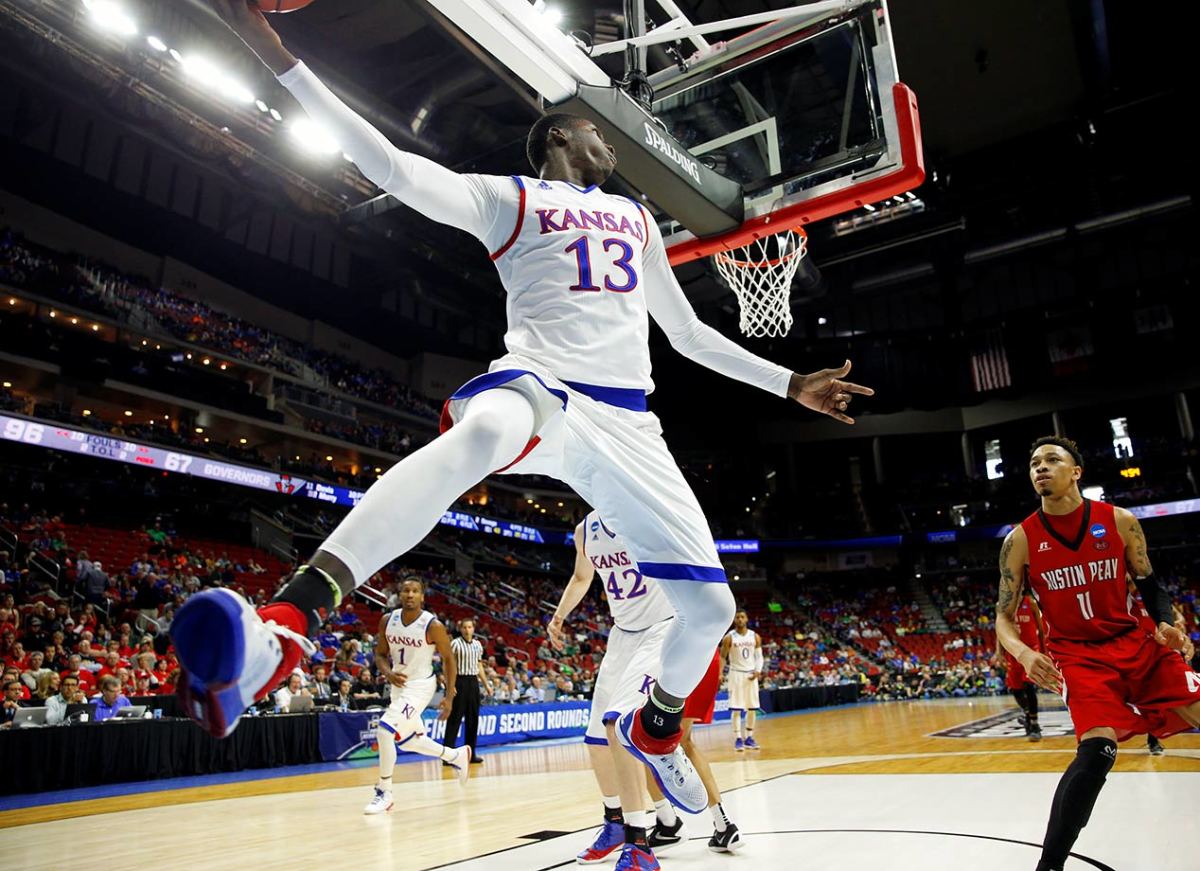
Diallo is bouncy, aggressive and has a reputation for playing extremely hard. With added seasoning, he should become a useful energy big.His considerable length helps compensate for his lack of height. He’s not a scorer beyond the dunks and hustle bucket, which limits his upside. Diallo was buried in the Kansas rotation, but will be granted more patience from here.
#24: DeAndre Bembry, St. Joseph — 6'6", 207 | Forward | Junior
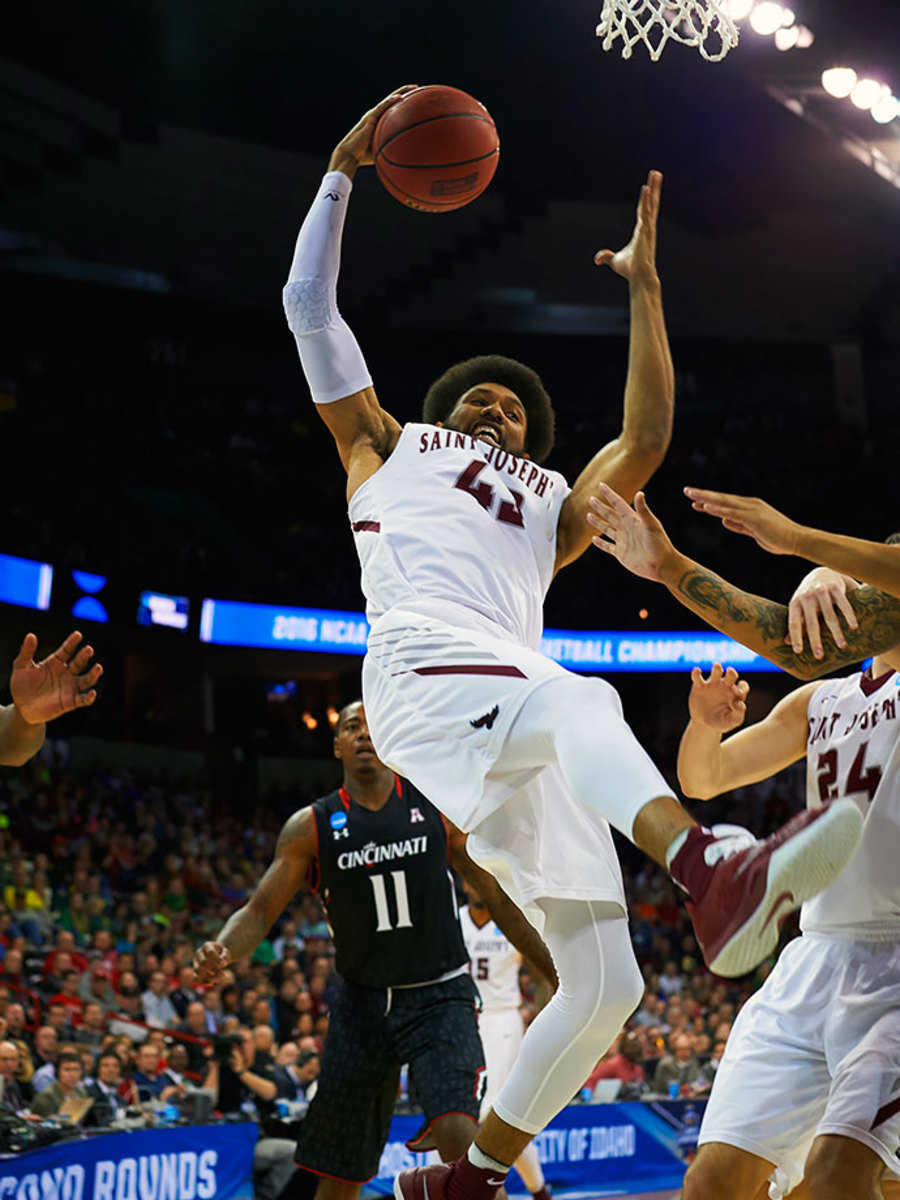
Bembry’s one of those players who just gets it. He’s got a mature game and the college production to back it up. He’s low-risk in that you can see him meshing into any offense with his playmaking and versatility. The major question is his three-point shot, but it’s not broken and if you play him alongside shooters it should alleviate some of those spacing concerns. Bembry could make an impact early in his career and help a playoff team next season.
#25: Ivica Zubac, Spain — 6'9", 265 | Forward | 19 years old
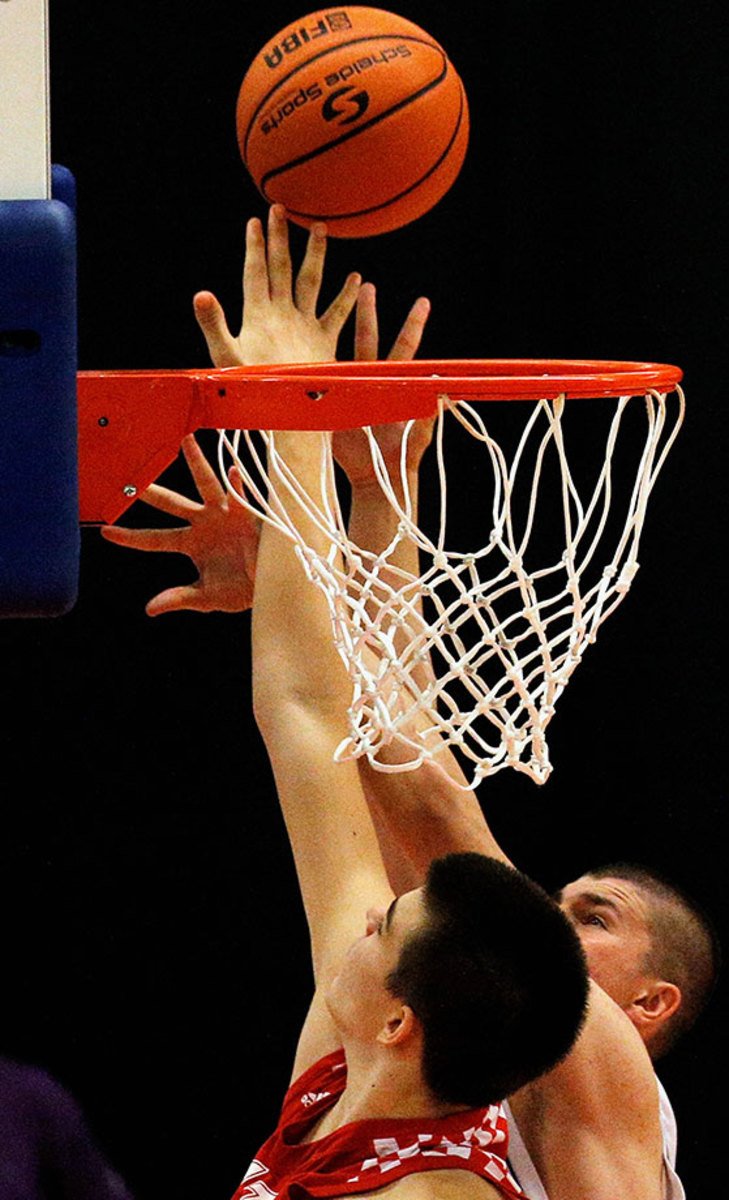
Zubac turned heads with insane production at the 2015 FIBA U19 Worlds (33.7 PER, 17.6 points, 7.9 rebounds). He’s a strong finisher with a great frame and nice post-up game. Zubac has potential to cut it defensively and should be a fit at the next level as a screen-setter and rim-runner. He apparently prefers to come over to the NBA next season, but can justify a place on someone’s bench given his tools and possibilities. If you can stash him, even better.
#26: Thon Maker, Orangeville Prep — 7'0", 219 | Center | 19 years old
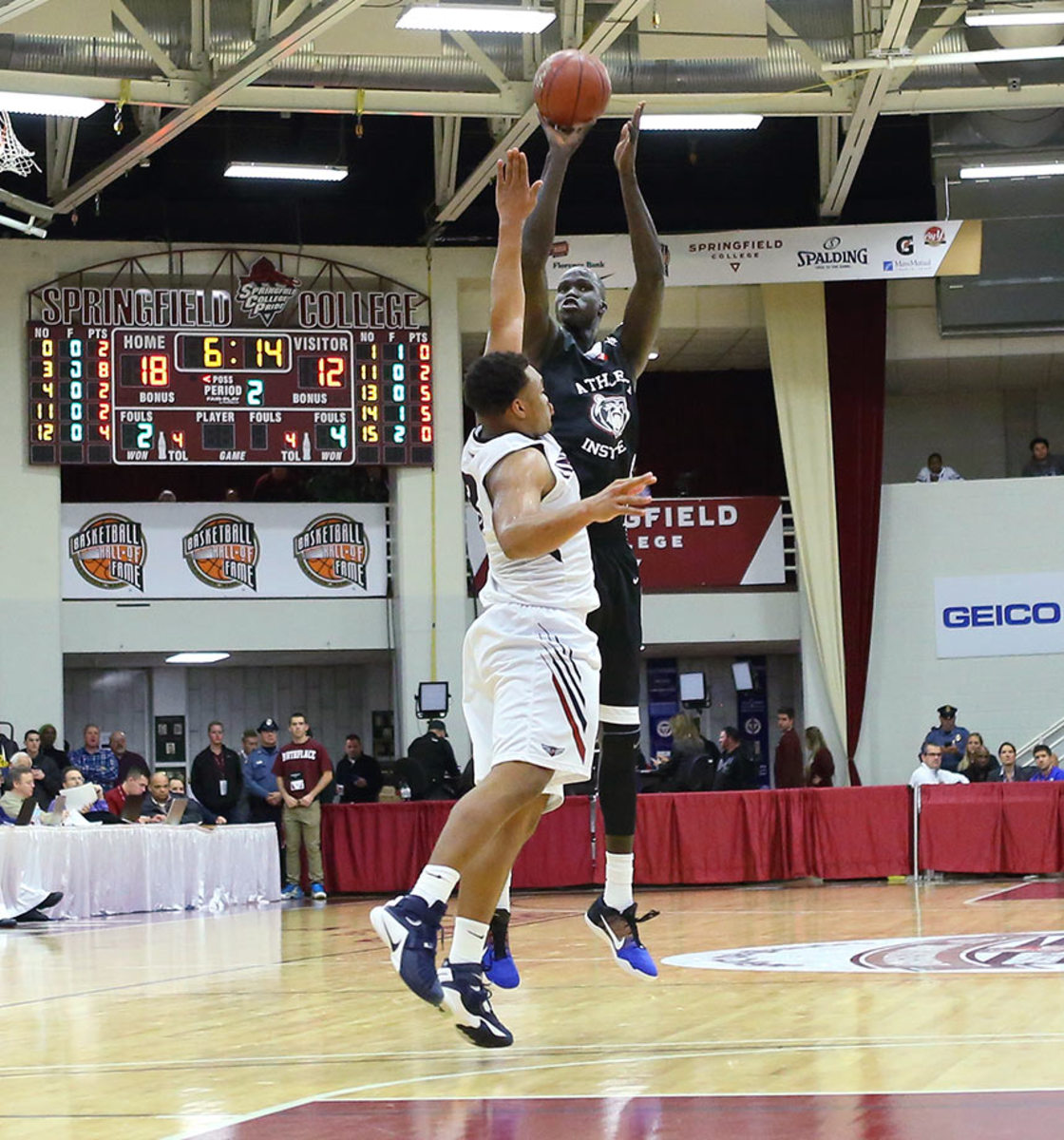
Opinions remain mixed on Maker, but it seems scouts are beginning to come around a bit. He’s a legit 7-footer, long and mobile, but, of course, rail-thin. People like his intangibles, yet there are still a ton of ifs when figuring out which of his strengths actually translate to the league. He might be an athletic energy big who can step out and make a shot, he also may never be able to bang inside. Maker has been working out against Brandon Ingram leading up to the draft and apparently held his own. There’s a wide range of outcomes here.
#27: Juan Hernangomez, Spain — 6'9", 225 | Forward | 20 years old
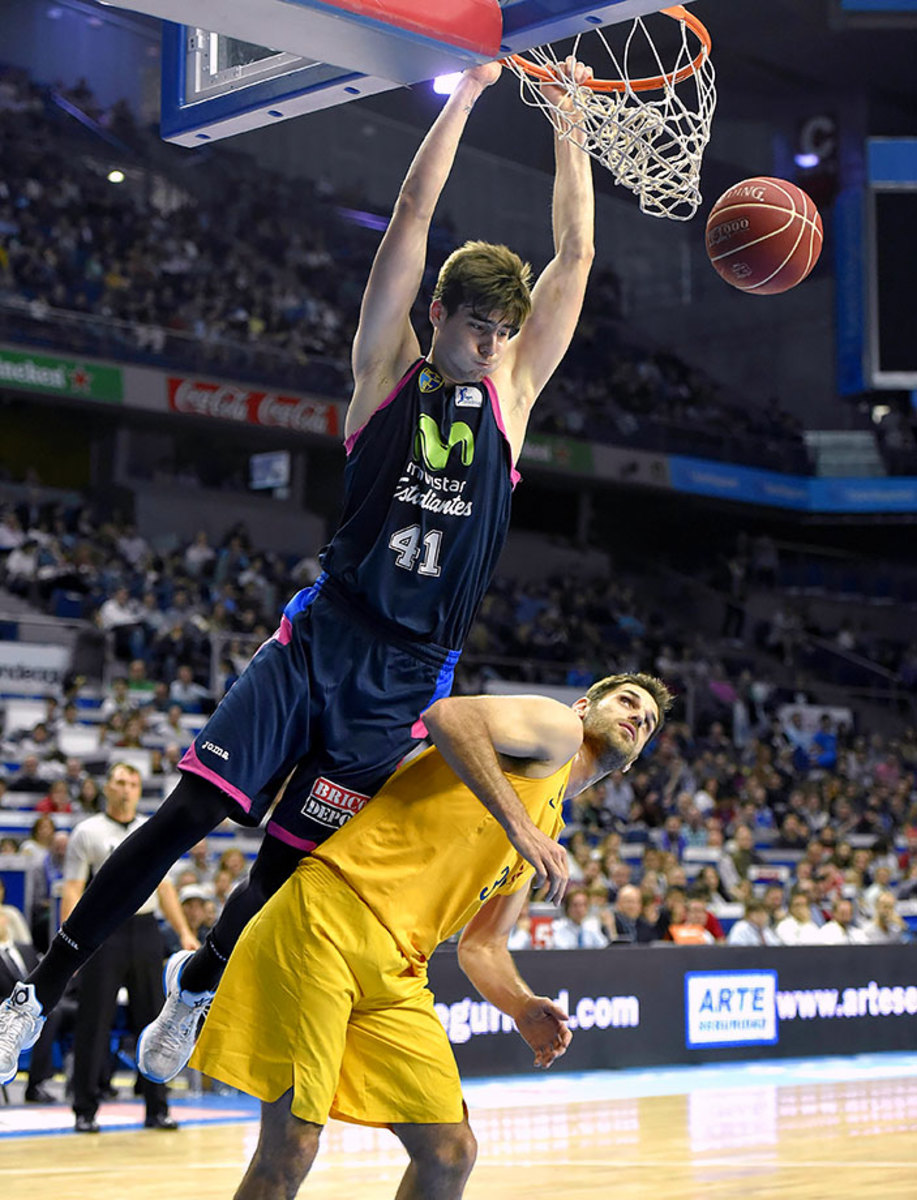
Hernangomez enjoyed a strong season in Spain and won’t turn 21 until September. A skilled stretch-four who could eventually play some three, he’s comfortable getting his offense spotting up and finishing inside. One scout cited Hernangomez’s high energy level and deceptive leaping ability. It helps he’s already playing legit minutes and producing in a very tough league. Think late first round.
#28: A.J. Hammons, Purdue — 7'0", 281 | Center | Senior
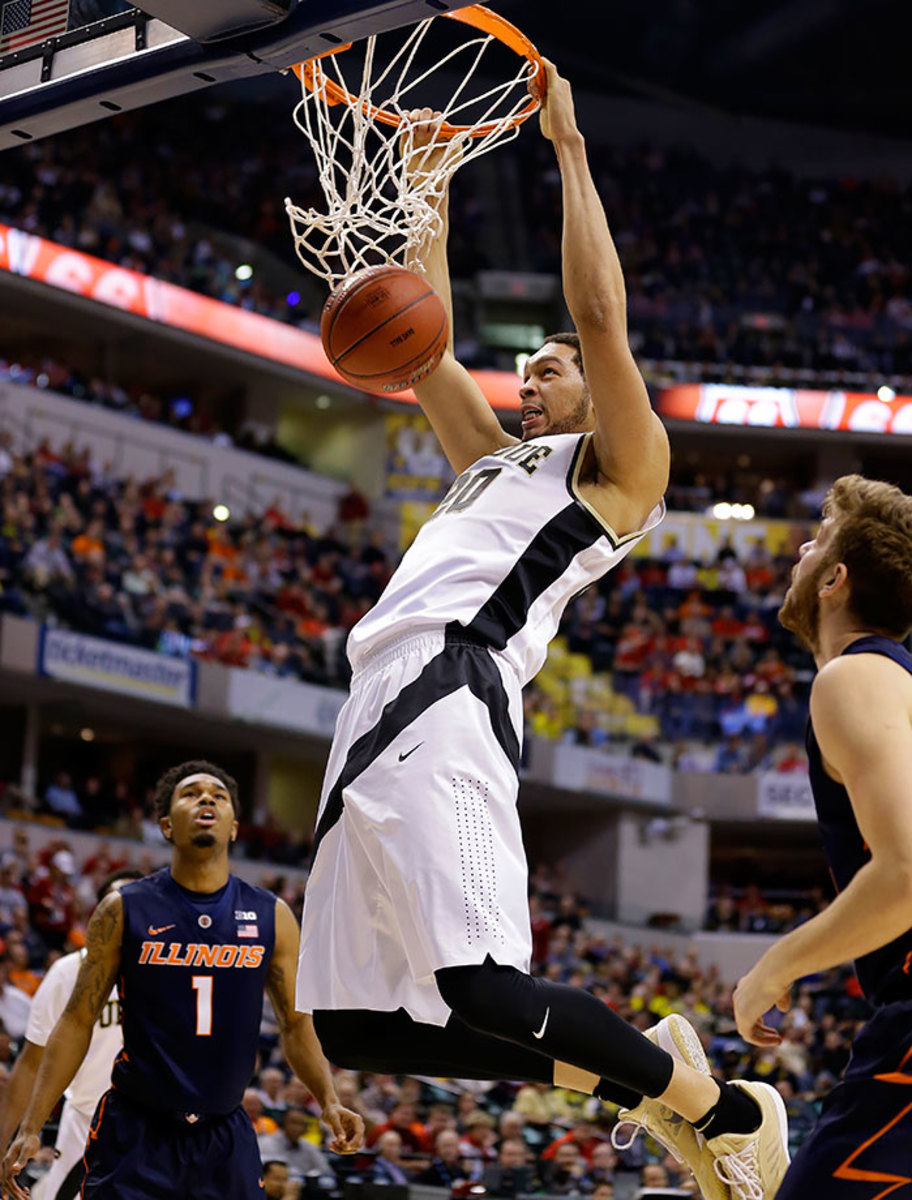
There’s no reason Hammons shouldn’t be a useful rim protector from day one. He’ll turn 24 soon, which will keep him out of the upper reaches of the draft, but he’s an NBA-level talent with an improving offensive skill level and pro-ready body. The question with him has always been his motor, and teams are fully aware of some off-court discipline issues at Purdue. There are a lot of ifs, but Hammons could surprise if the lightbulb starts to go off.
#29: Malik Beasley, Florida State — 6'5", 190 | Guard | Freshman
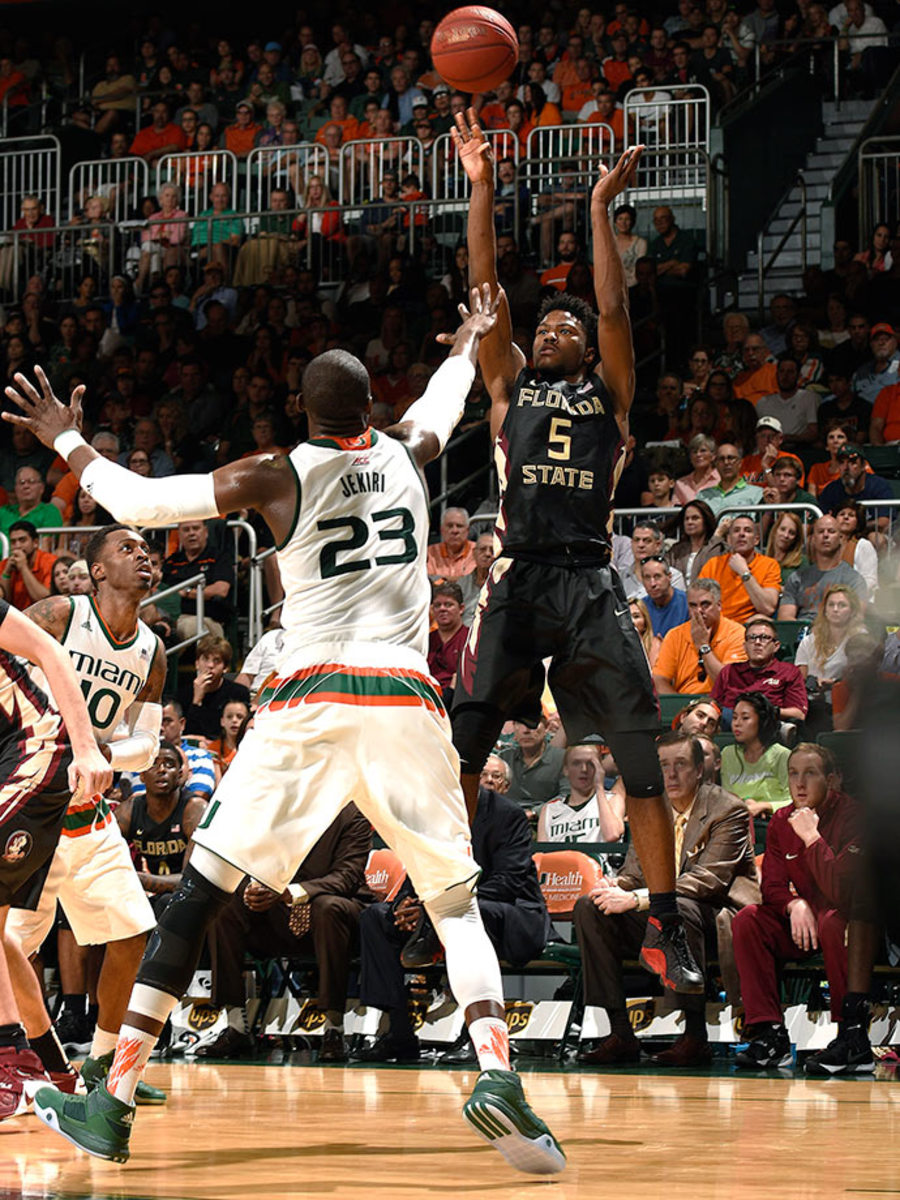
An athletic slasher with a nose for the basket, Beasley demonstrated the ability to score at all three levels in his one season at FSU, and improved as the year went on. He can shoot it, has a great frame and brings notably strong intangibles in terms of makeup and competitiveness. He has a metal rod in his leg after a stress fracture injury that will concern teams.
#30: Stephen Zimmerman, UNLV — 7'0", 240 | Center | Freshman
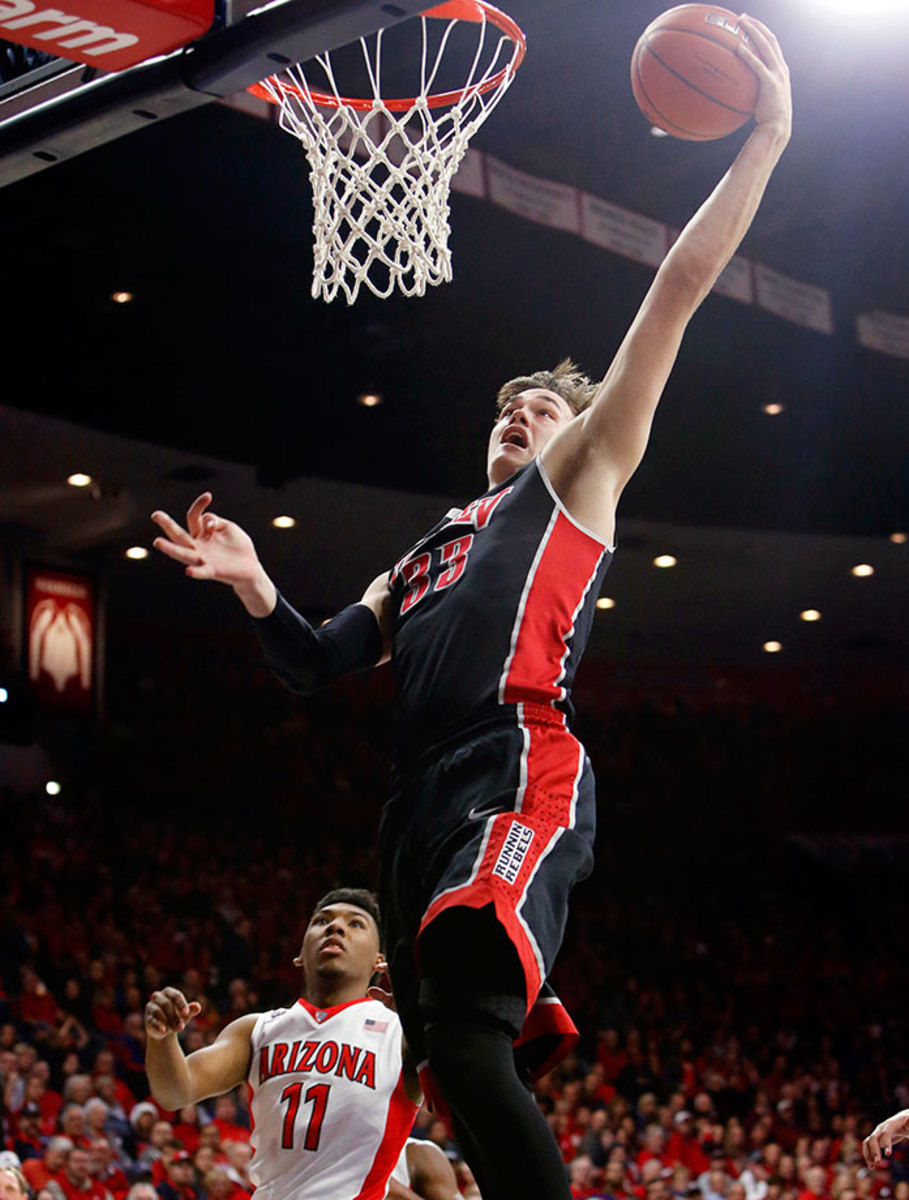
Zimmerman has great size and mobility, and a pretty nice shooting touch. He’s not a guy who really loves to bang inside and has a tendency to float away from the basket too much. He’ll need to bulk up to play center and to defend his position. He’s a dart throw, but taking a chance on a stretch big with some upside isn’t the worst thing in this range.
It’s normal for players to see significant improvement from their freshmen to senior seasons, but the strides Valentine made stand out, according to MSU assistant coach Dane Fife. Valentine raised his scoring, assist rate, rebounding and shooting percentage last season, while playing roughly the same amount of minutes he received his junior year (33 per game).
“A lot of the improvement aspect is certainly on the program and the program’s staff and culture,” Fife said. “But gotta give some major credit to Denzel and his drive to become an NBA player, his drive to become a champion.
"He’s unbelievably driven to become a great player, a great teammate. A guy that wants to make a career with playing the game of basketball. So I give most of the credit to Denzel’s desire to improve and become a great basketball player.”
Valentine can play four positions in the NBA, according to Fife. Perhaps the biggest similarity between Valentine and Green, Fife said, is their intelligence.
“The one measurement you can’t quantify is the ability to win games, the ability to do things to help teams win,” Fife said. “That was something we sold hard on Draymond, and some teams didn’t figure that out. They’re paying for it now.”
• LeBron, Green matchup decides Finals | LeBron realizes NBA title dream
In the age of one-and-done players, Izzo has remained a stickler for developing four-year players. It was seniors Mateen Cleaves and Morris Peterson who helped lead Michigan State to its first championship in 21 years in 2000, and it will likely be seniors who lead the Spartans back—if Izzo manages to reach the championship game again. Though Valentine couldn’t deliver on his promise to bring the Spartans a championship this year, he says the lessons he learned playing at Michigan State are invaluable.
“Coach really teaches us how to play the right way, how to treat people on the court, off the court, it’s an all-around atmosphere at Michigan State that coach Izzo and the whole coaching staff teaches us how to play the game and bring us into a man,” Valentine said. “By year four, we’re developed, ready to go into the NBA, handle the lifestyle, we’re so much better on the court, we’ve been in the gym grinding, handling a lot of things. I just think it’s something Izzo and the coaching staff brings onto us.”
Like Green, Valentine is facing his share of questions entering Thursday. A major concern is if he will become an impact defender in the NBA. Green has emerged as one of the most versatile defenders in the NBA, but it’s less likely that Valentine will be able to effectively guard big men. As a result, he will be tested on the perimeter far more often, and scouts wonder if he has the foot speed and lateral quickness to keep up with better NBA athletes.
There is also last week’s report, from Basketball Insiders, indicating Valentine may have a knee issue that could scare off teams.
“How good of an athlete is he, and how much better will he get? And then how are his knees?” an anonymous NBA scout told SI’s Seth Davis. “I don't think he has a really high ceiling but he's smart, he can play pick and roll and he can shoot the hell out of the basketball. One-on-one defense is going to be a struggle at times for him.”
Valentine, who missed four games after undergoing arthroscopic knee surgery last December, downplayed the knee concern at the NBA Draft Media Day on Wednesday. He said he hasn’t had any additional issues since the surgery.
“I’m healthy right now, I only missed four games in college,” he said. “It’s really a surprise, it’s really funny to me because I’m healthy now, it’s only going to get better going forward because I’m going to get time to focus on me.”
• Bulls trade Rose to Knicks | Teague moved to the Pacers
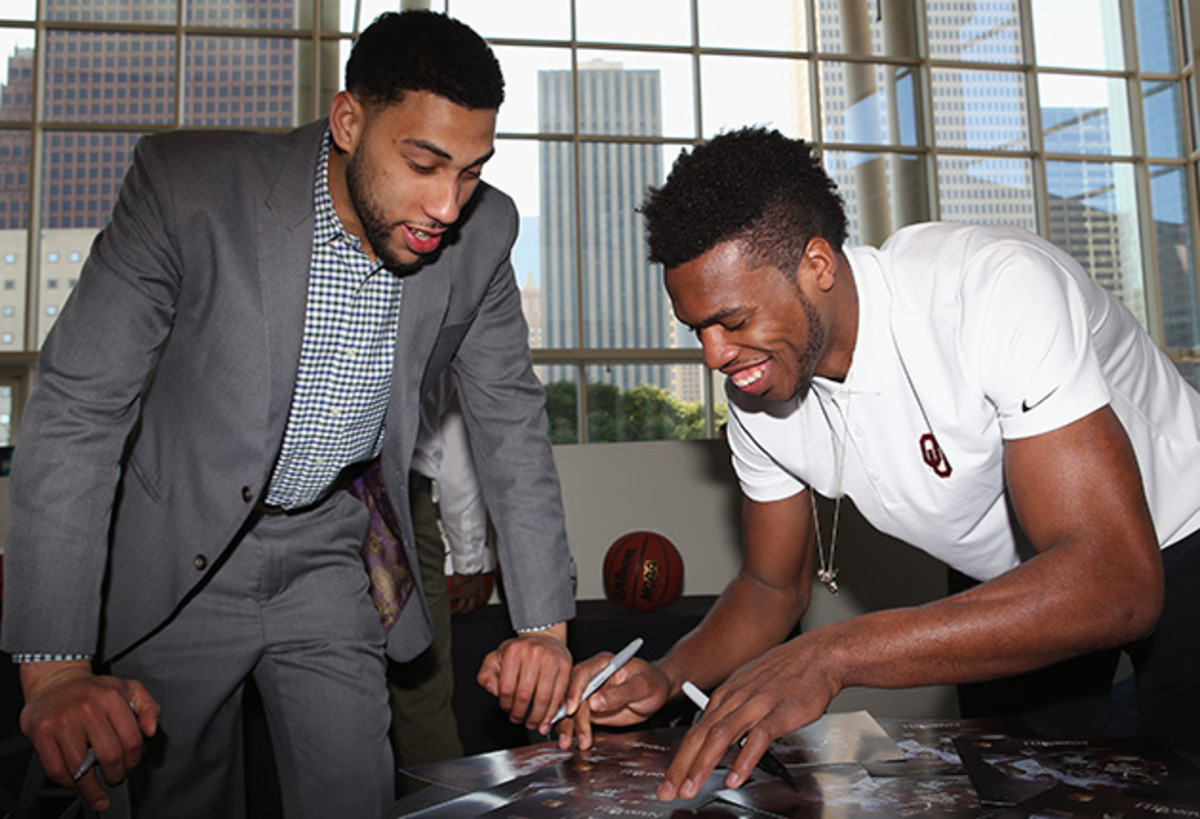
A case can be made that Valentine should be a near-lottery lock like former Oklahoma senior guard Buddy Hield, who’s considered the best pure shooter in the draft. The two players were neck-and-neck for the Wooden Award last season, which Hield eventually took home. Though Hield was a better scorer, averaging 25 points per game on 50% shooting from the field and 46% from behind the arc, Valentine was more well-rounded overall. Hield struggled to set up his teammates, averaging two assists and three turnovers per game, and projects more as a pure wing in the NBA.
“Knowing Valentine, the way he scores the ball and the way he passes the ball, he’s great at what he does and that’s what makes him special,” Hield said. “He can play point guard, he can play the two guard, and he can play small forward.”
Valentine said Hield deserves his draft projection, pointing to his role in Oklahoma’s Final Four run. Though Valentine said teams haven’t knocked him for Michigan State’s first round exit at the hands of MTSU, he thinks his college accomplishments, which include a Final Four run during his junior season, are being overlooked.
“They’re totally being disrespected,” Valentine said. “I accomplished a lot in college. Only thing I haven’t pretty much done is won a national championship. There are other guys who accomplished a lot in college. But I definitely think what I accomplished is undervalued. But it is what it is, everyone has their own opinion, like I said, and everyone has to play at the next level.”
Valentine, once again, finds himself in a position where he has to prove himself. But that’s been the norm for him. He didn’t garner any significant draft buzz until his senior season. He wasn’t always sure his NBA draft day would come. Now that it’s around the corner, he understands the road ahead will be paved with more hard work.
“In today’s era it’s one-and-done’s, two-and-done’s,” he said. “When you’re a senior, you’re almost out of luck it seems like in today’s society. I just stayed true to the game, kept working and hoped everything worked out.”
